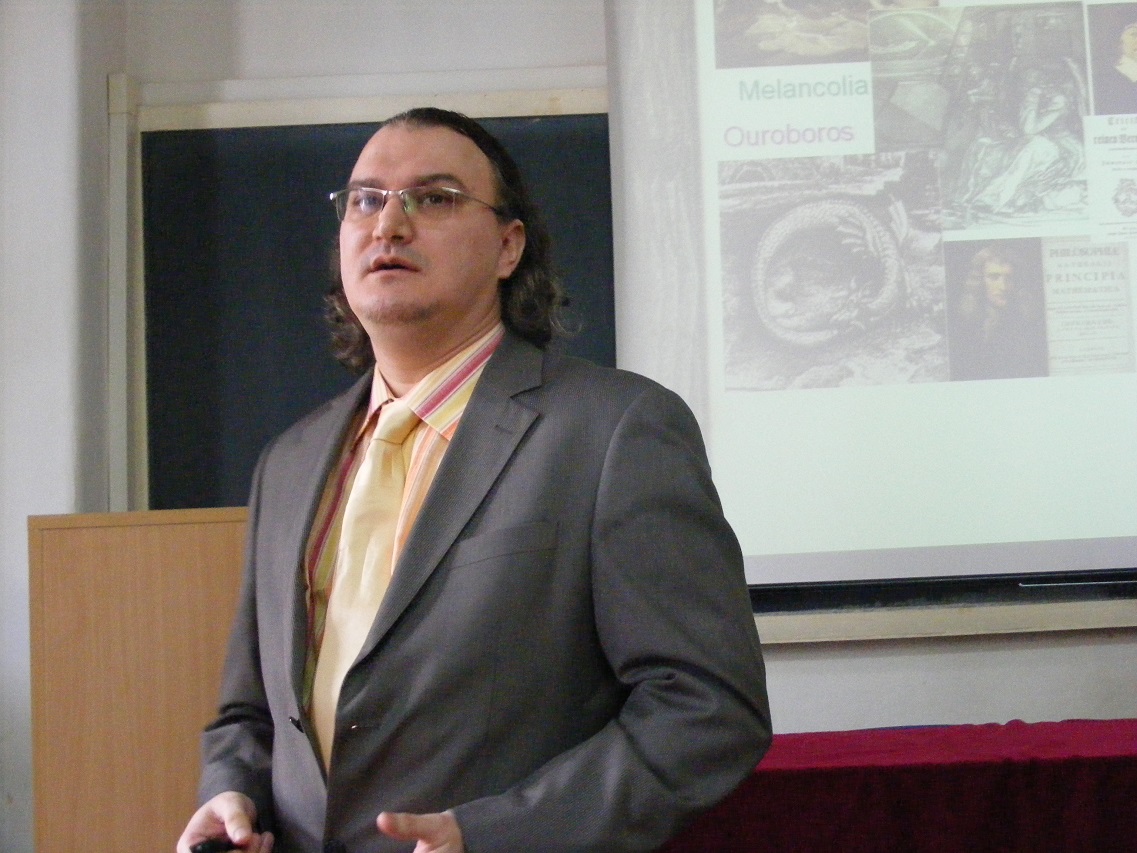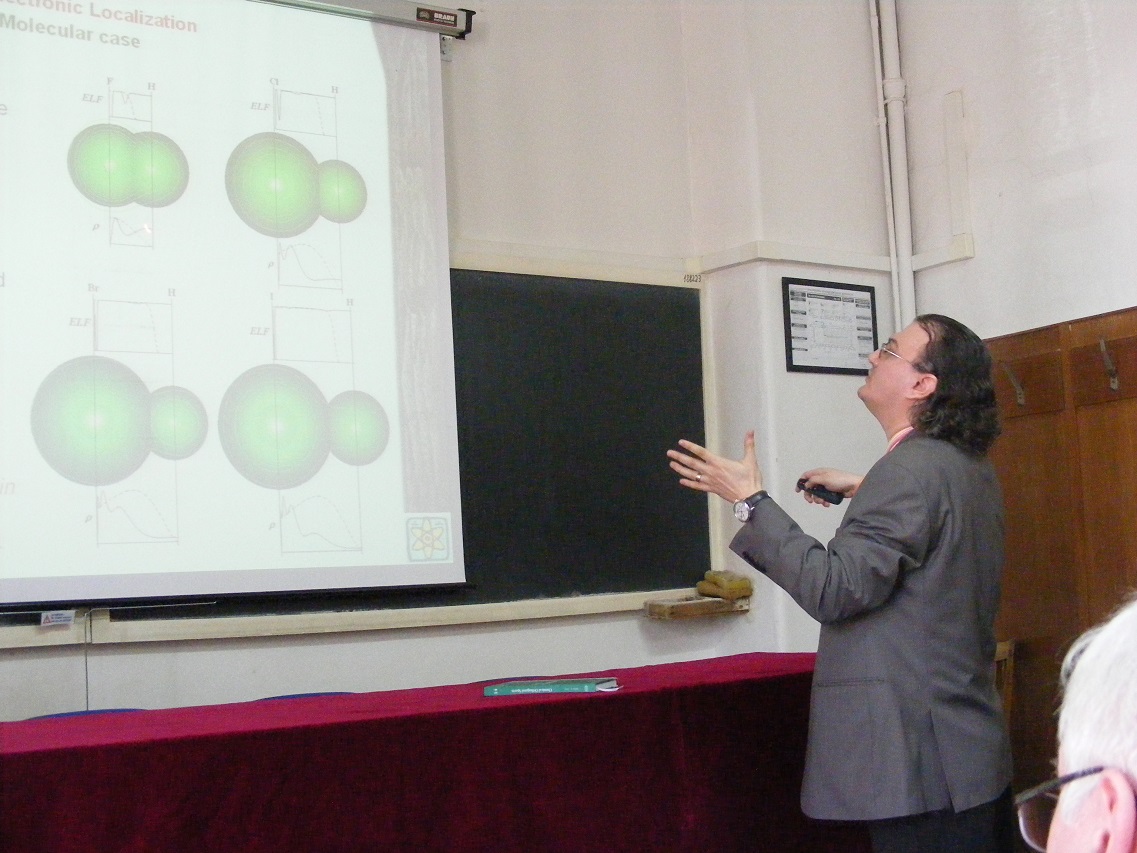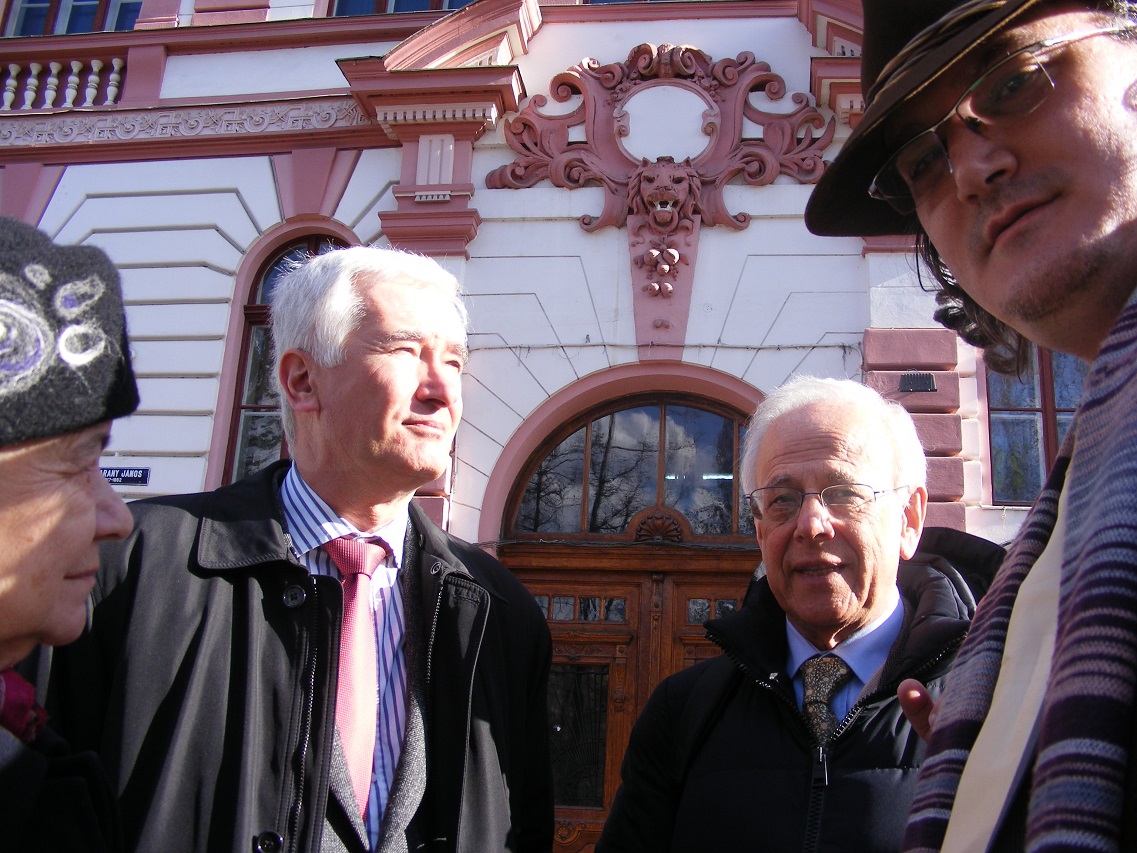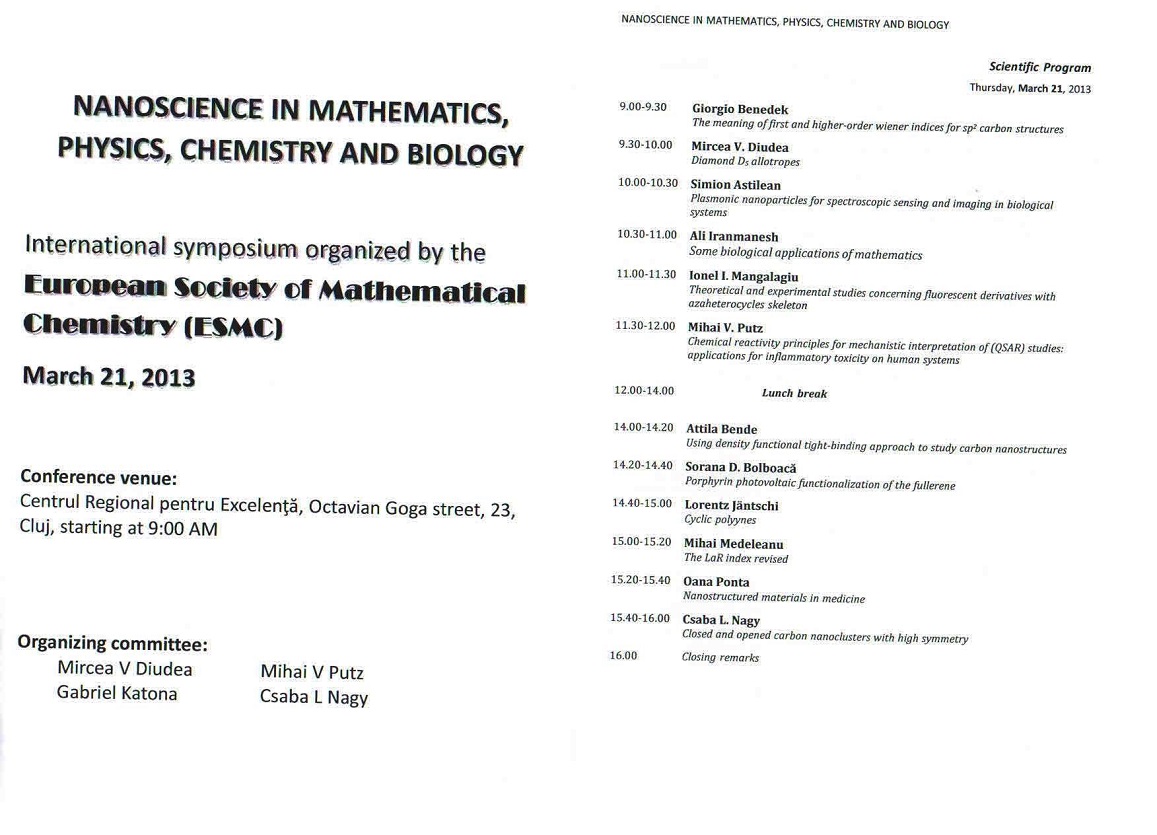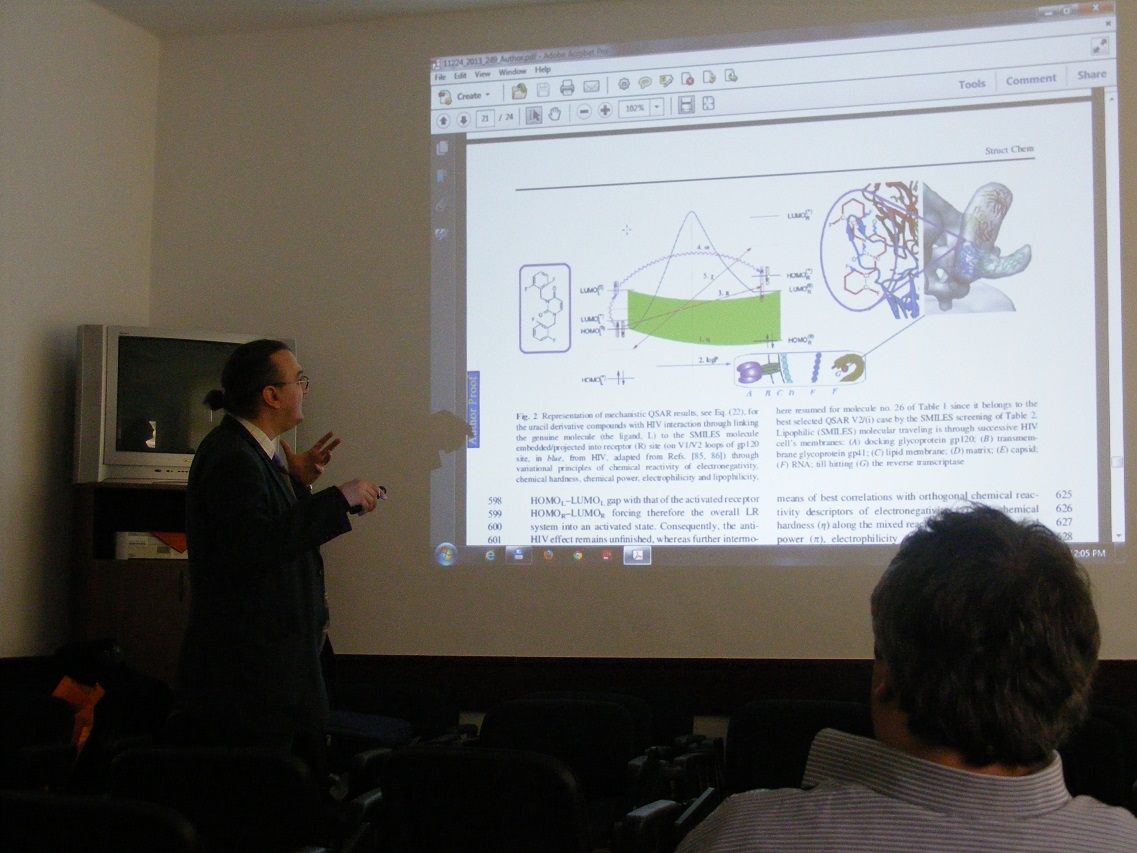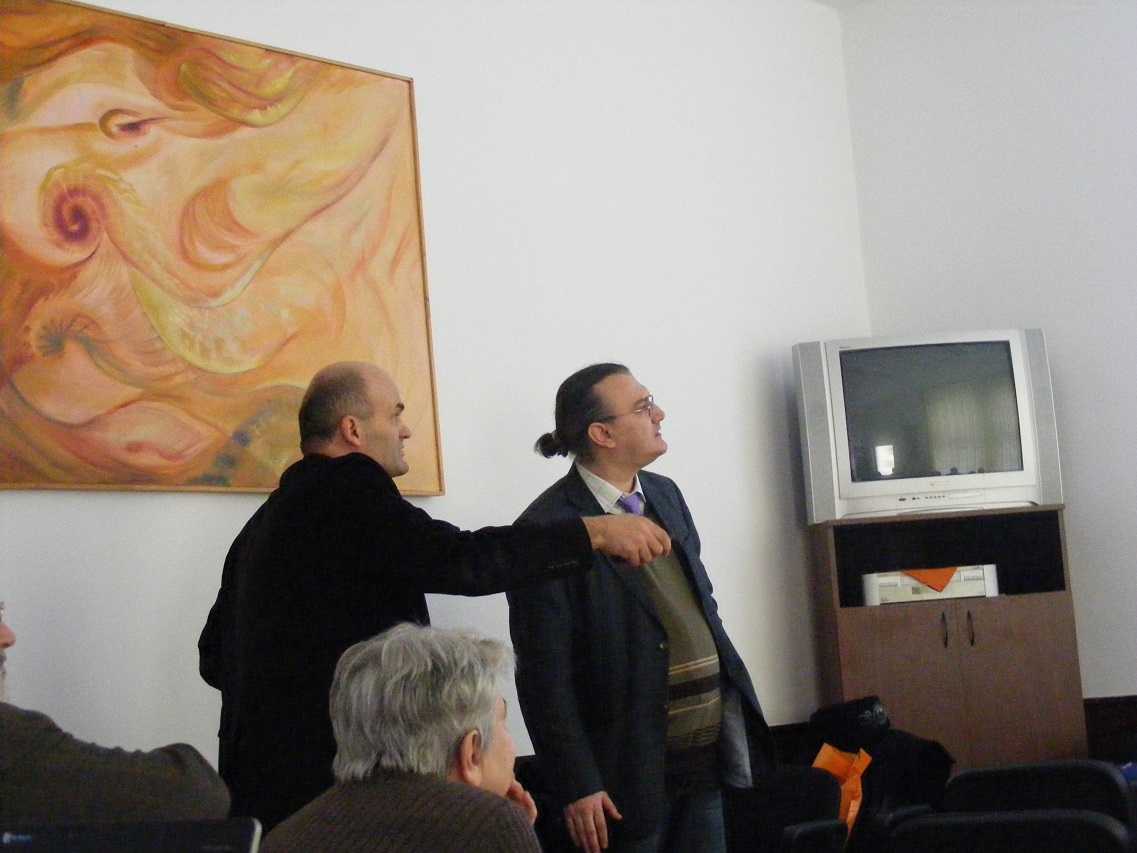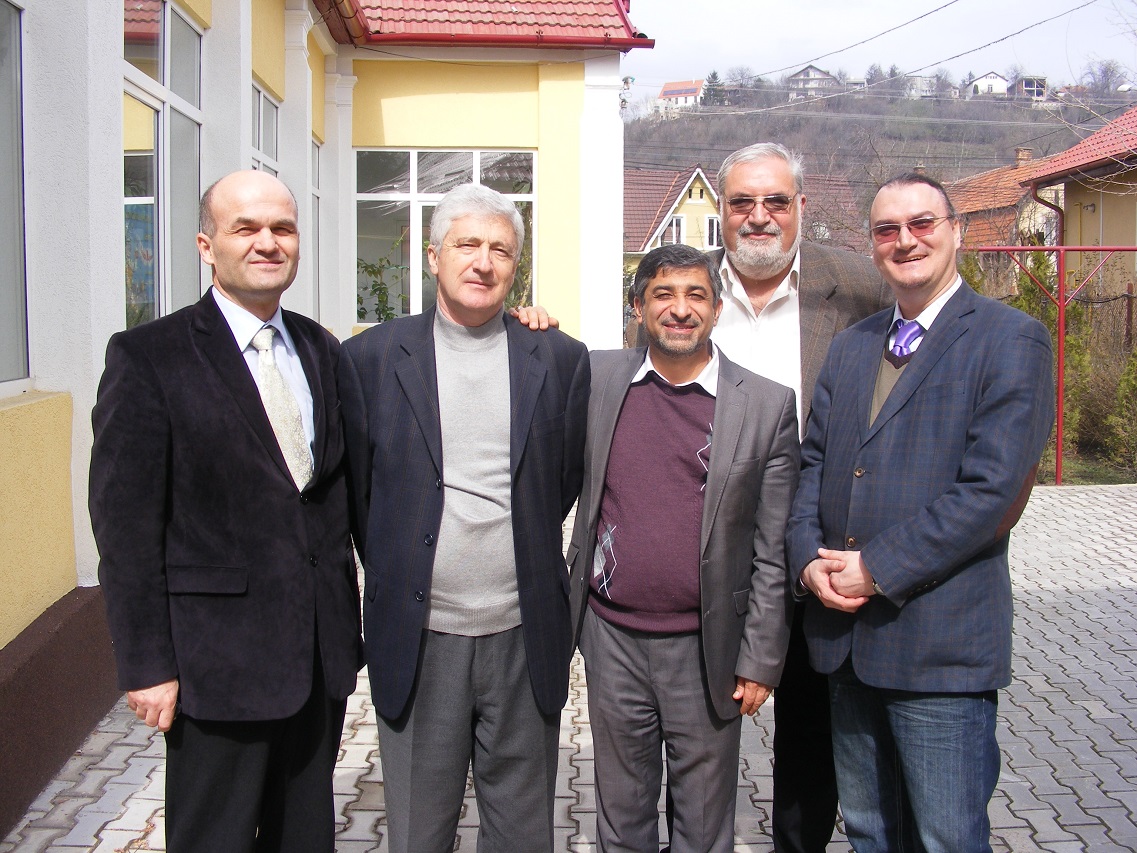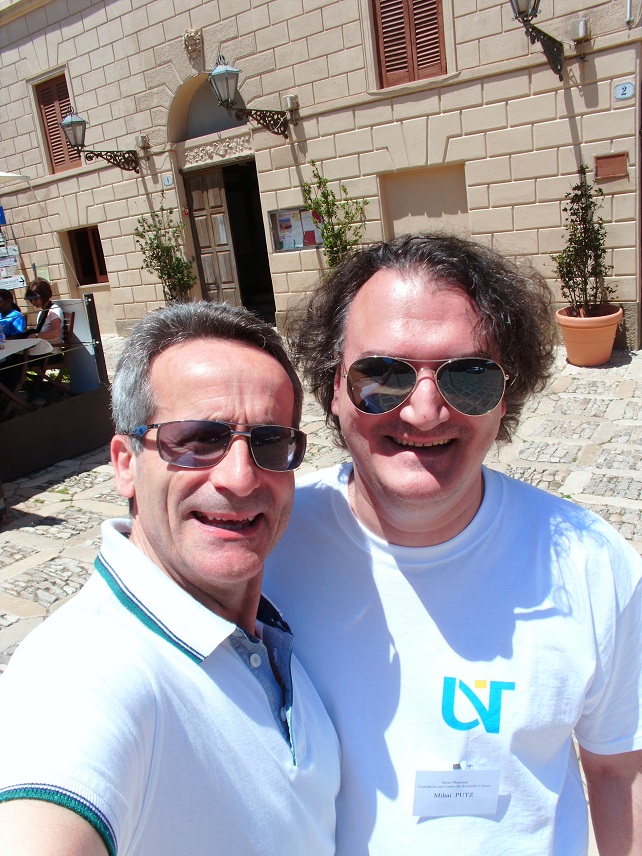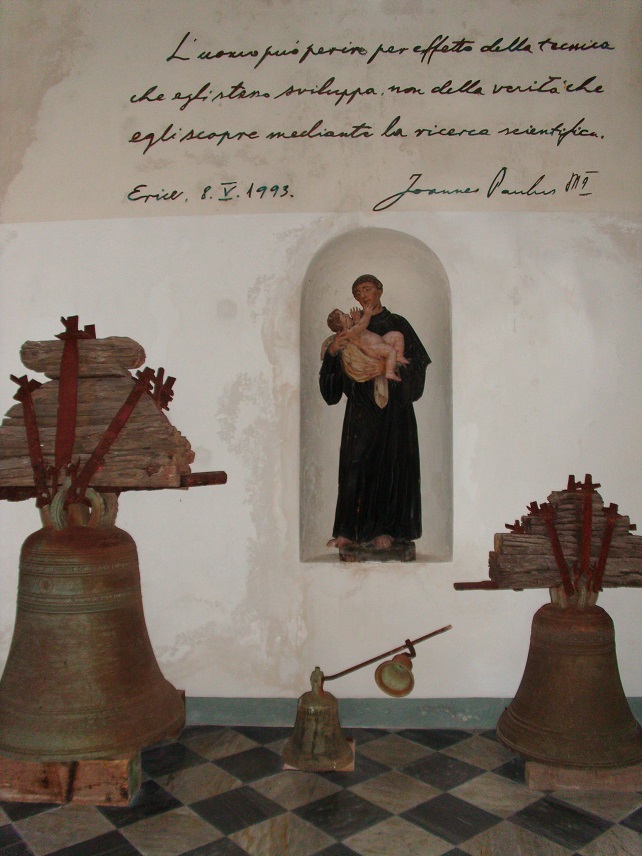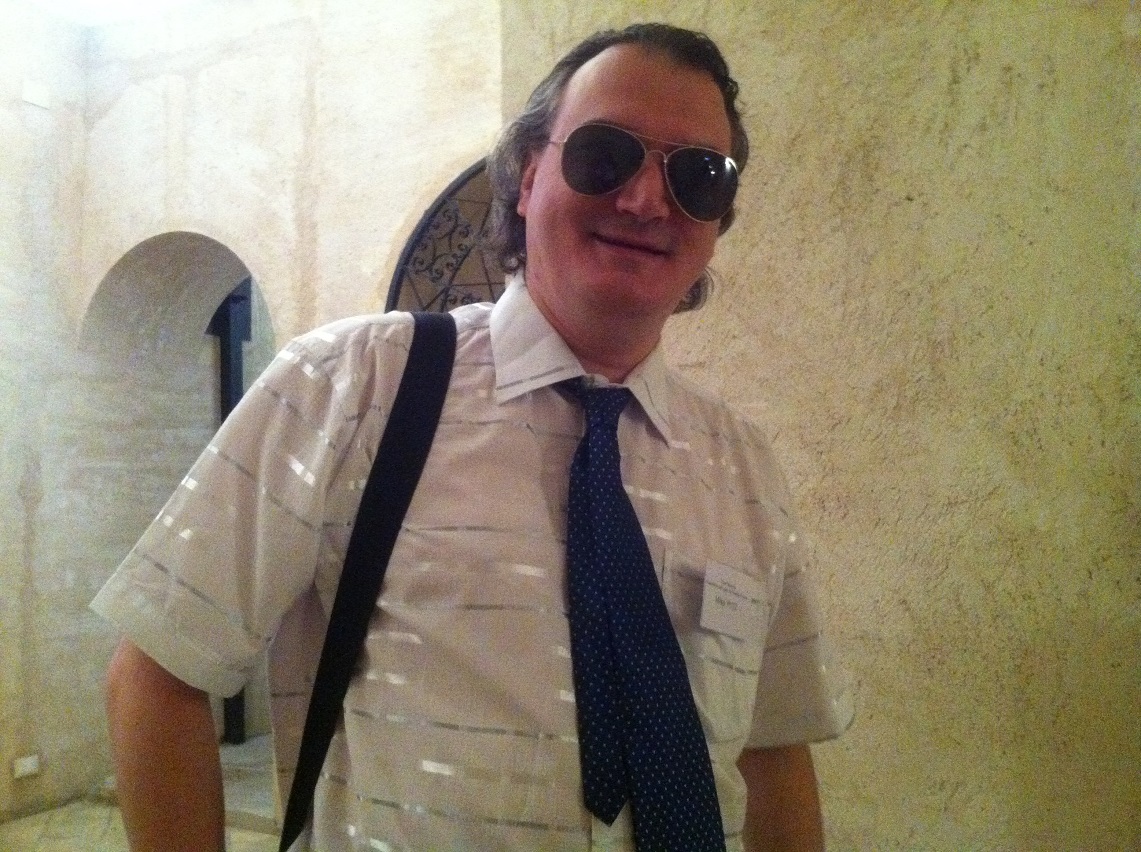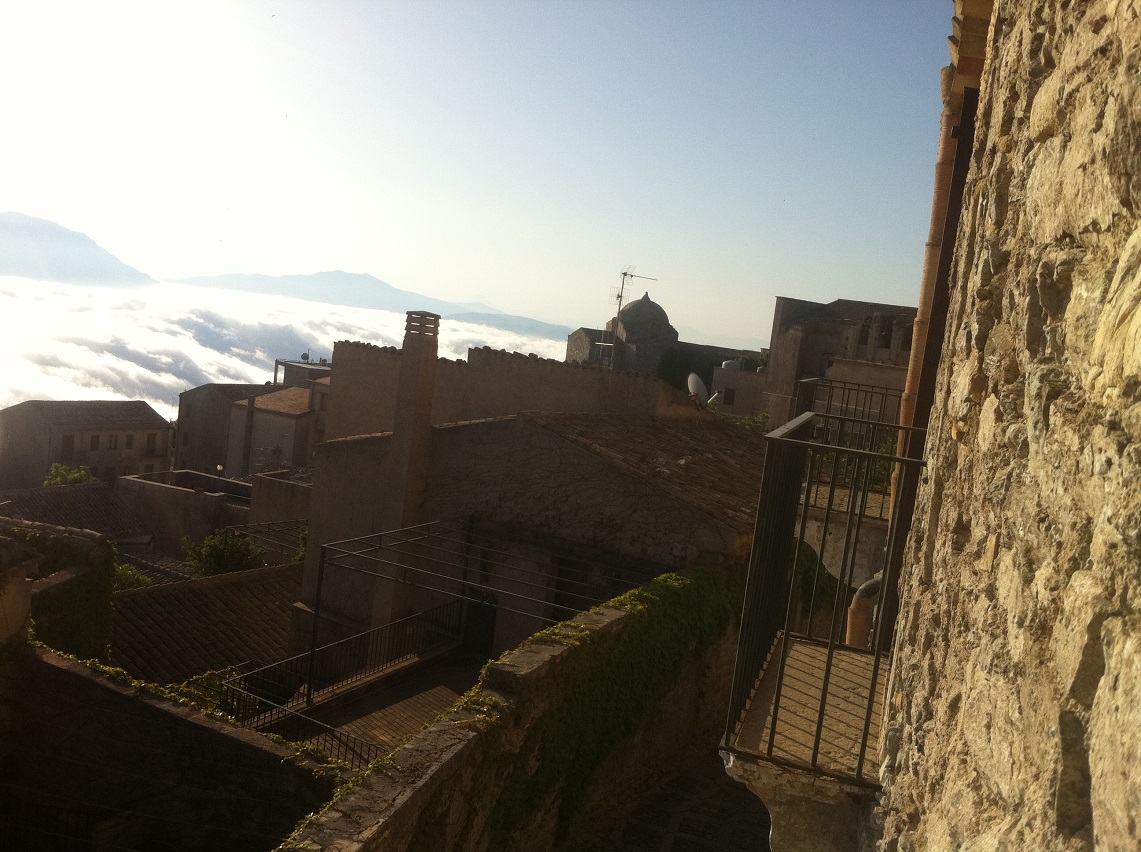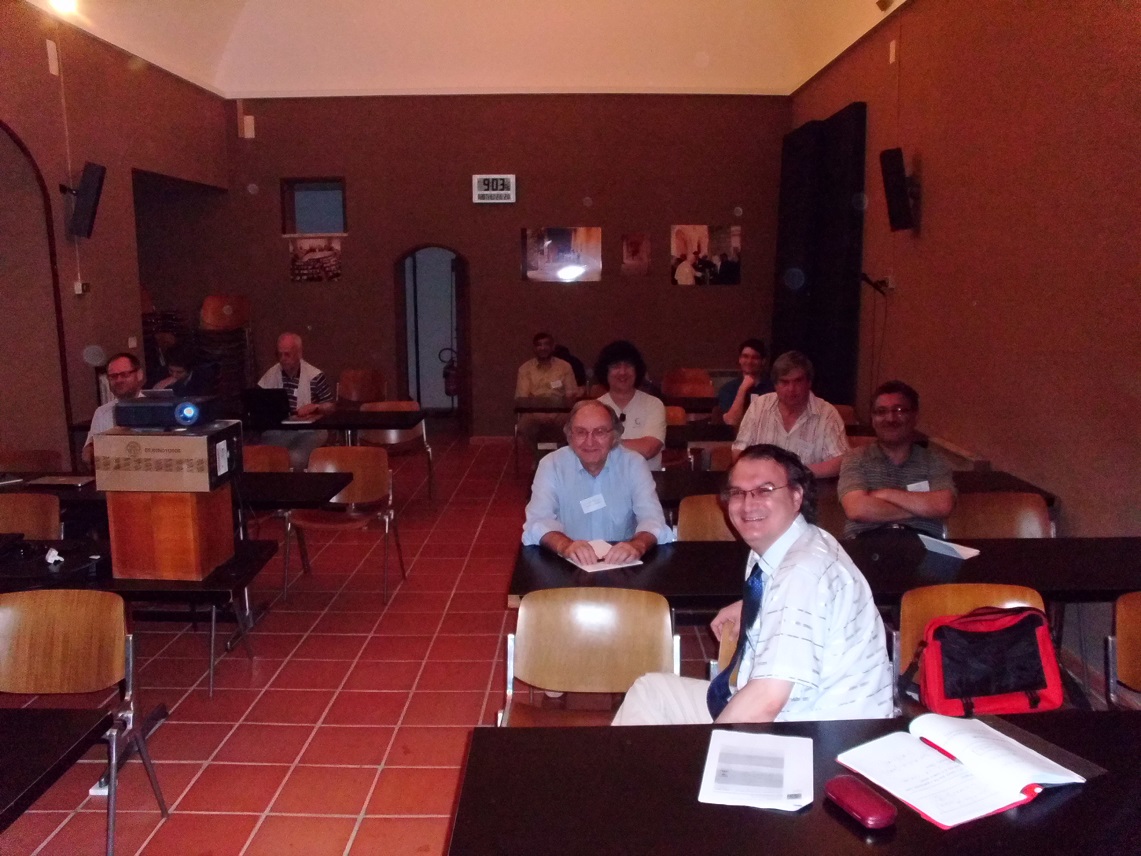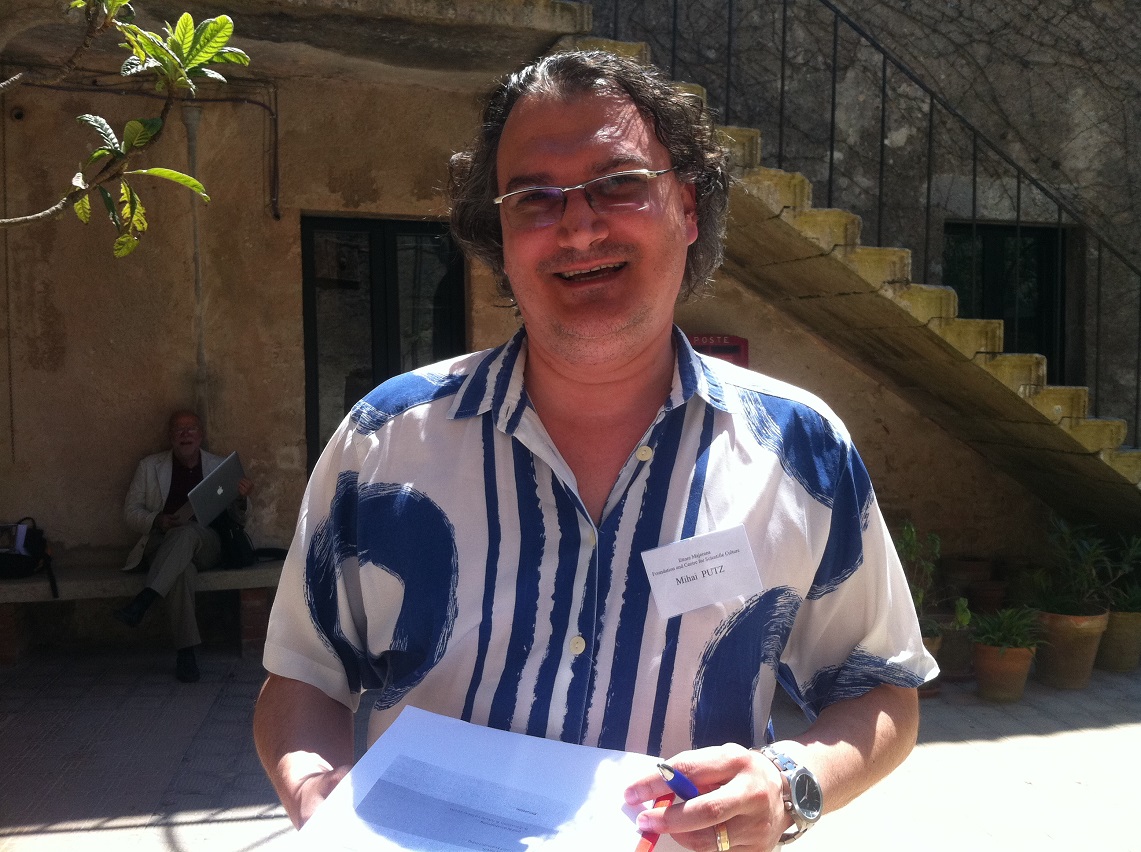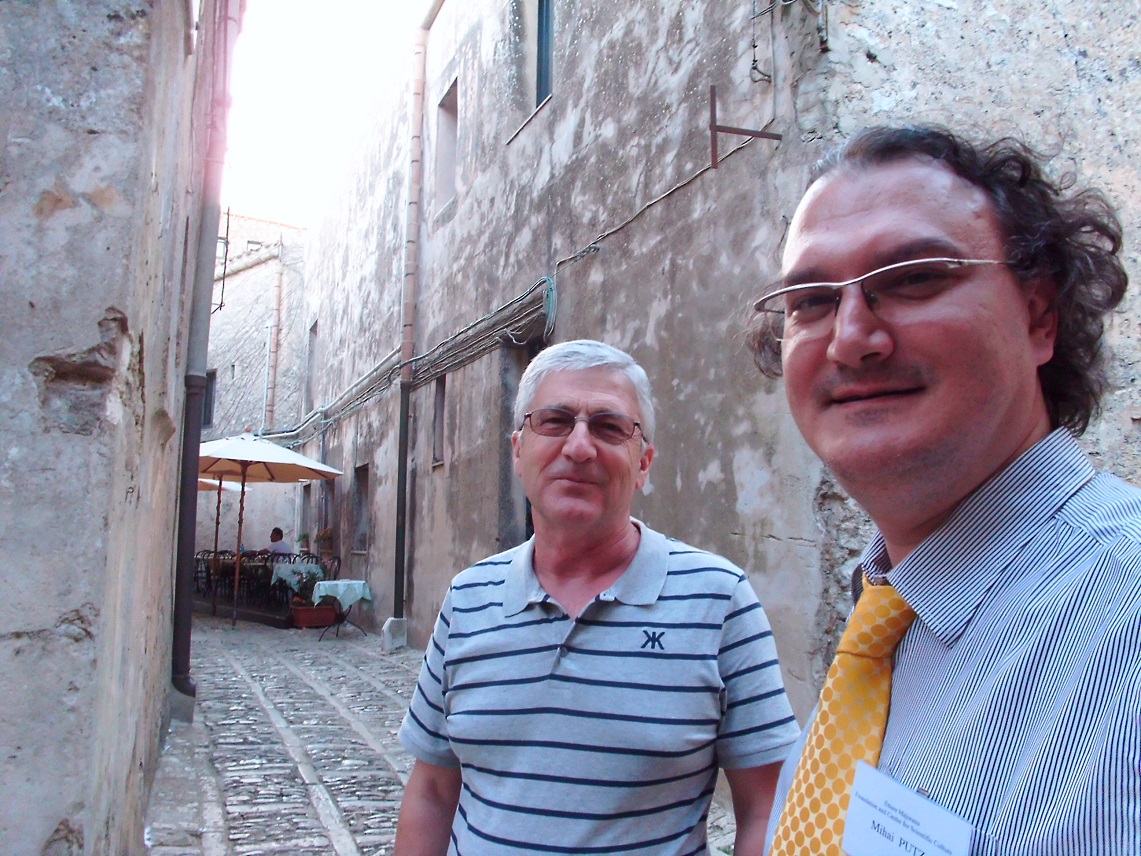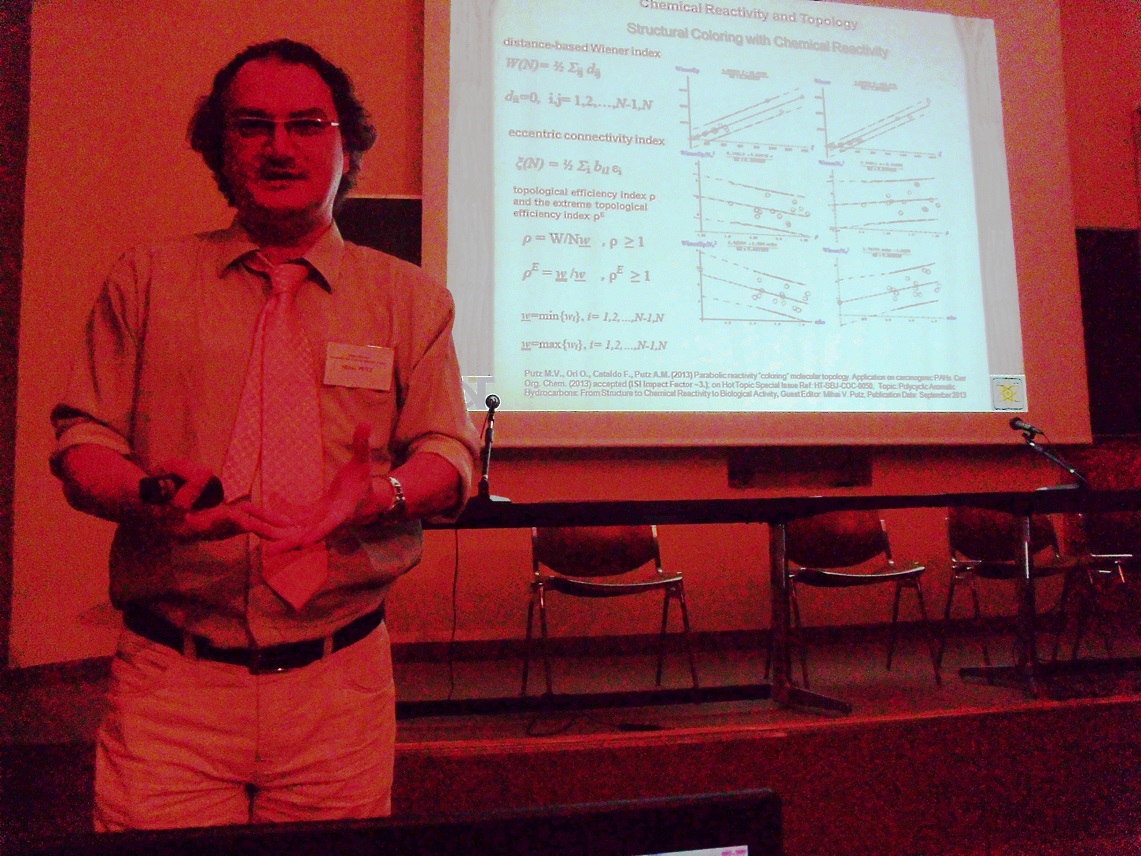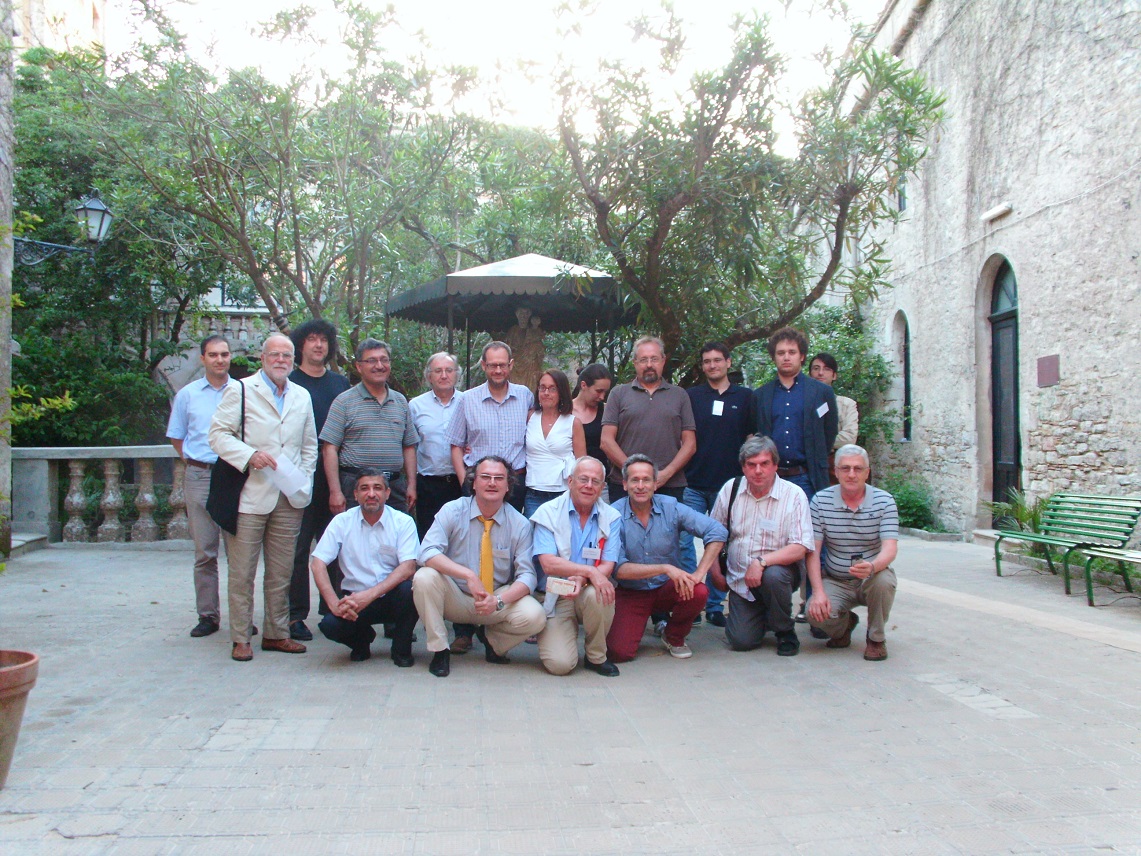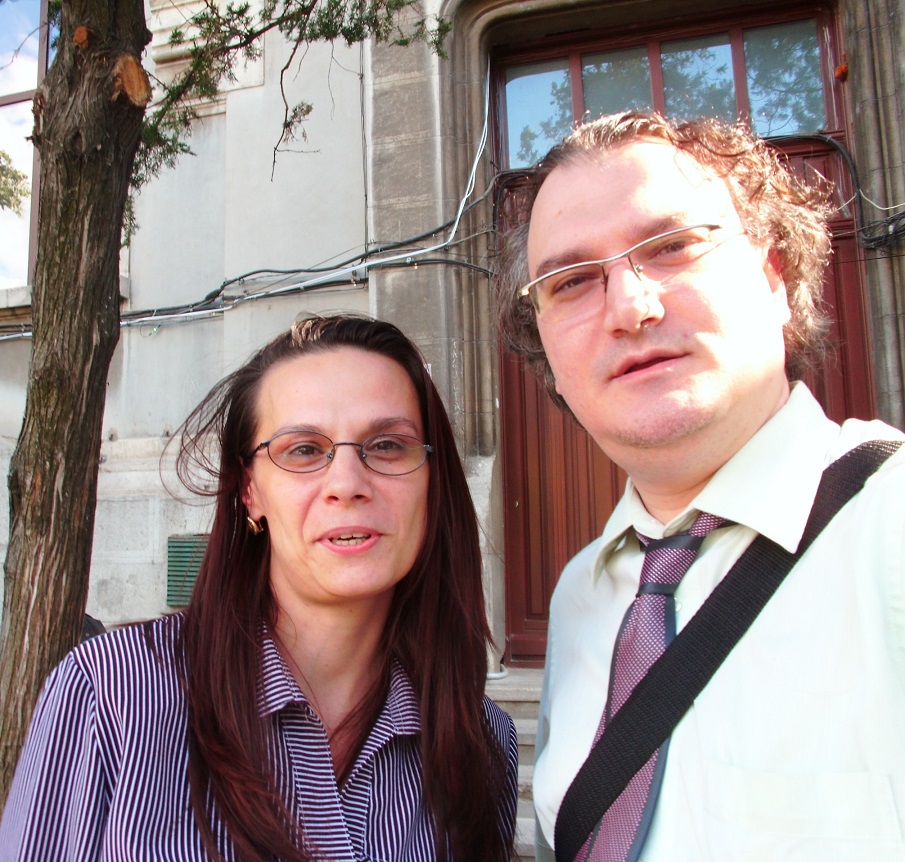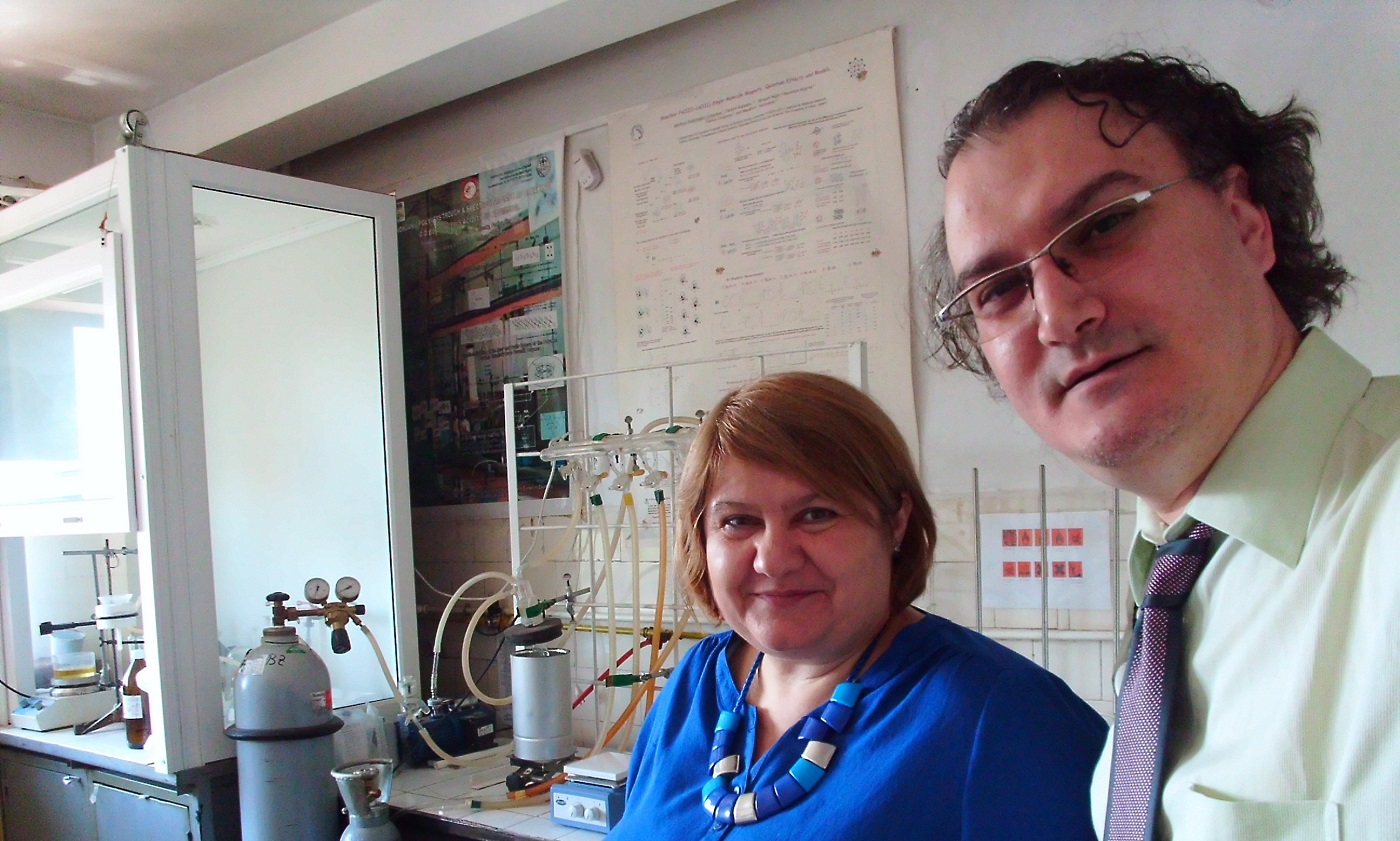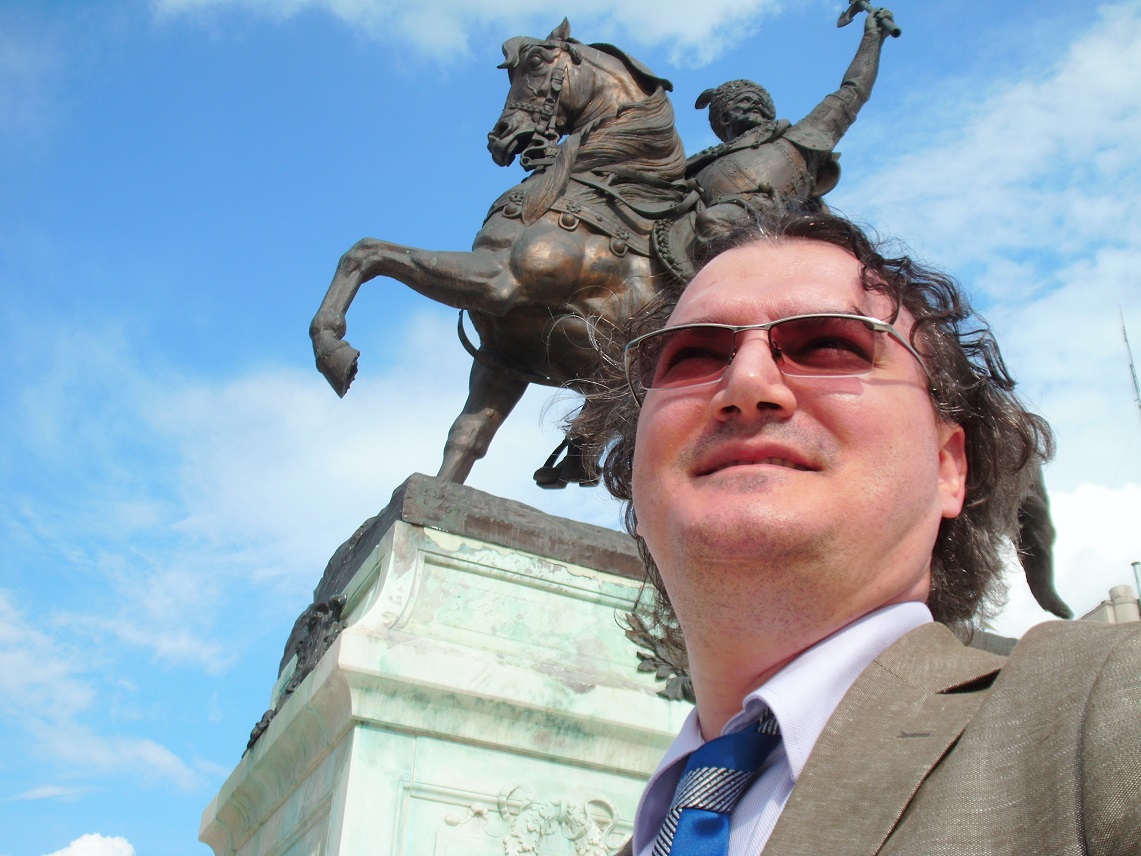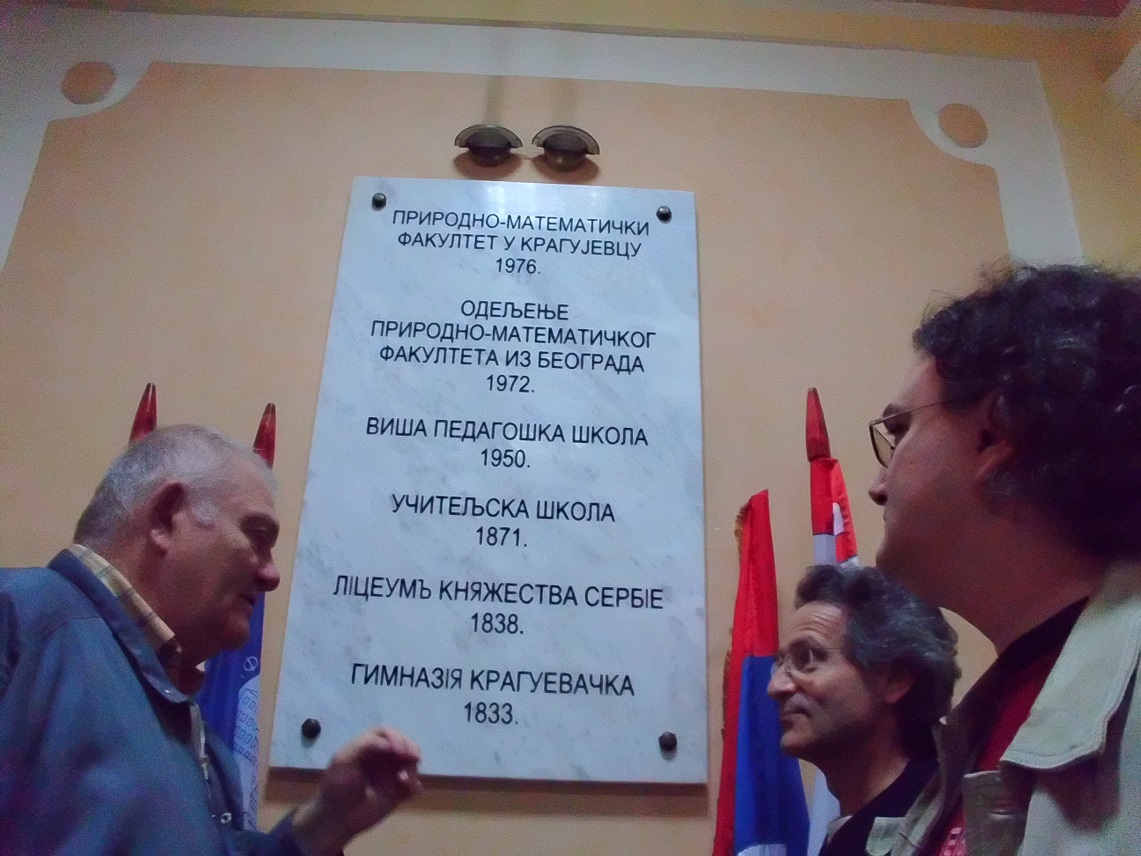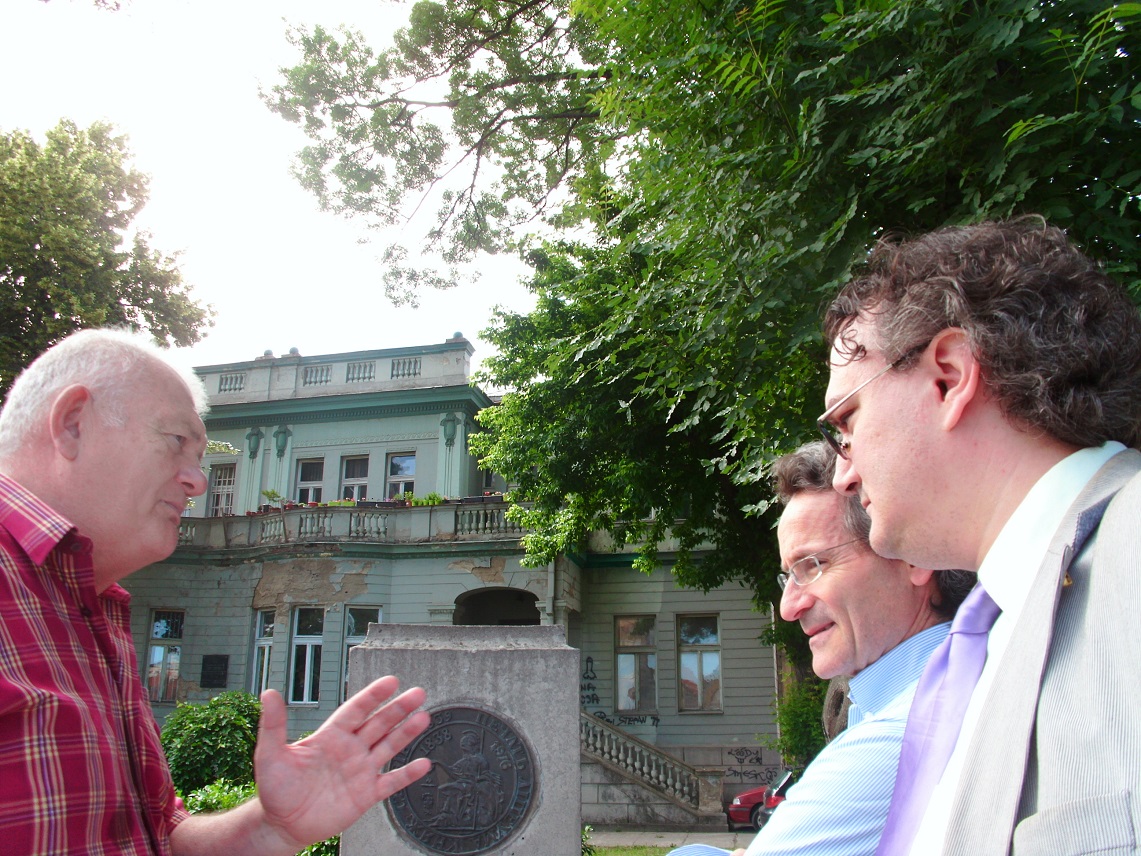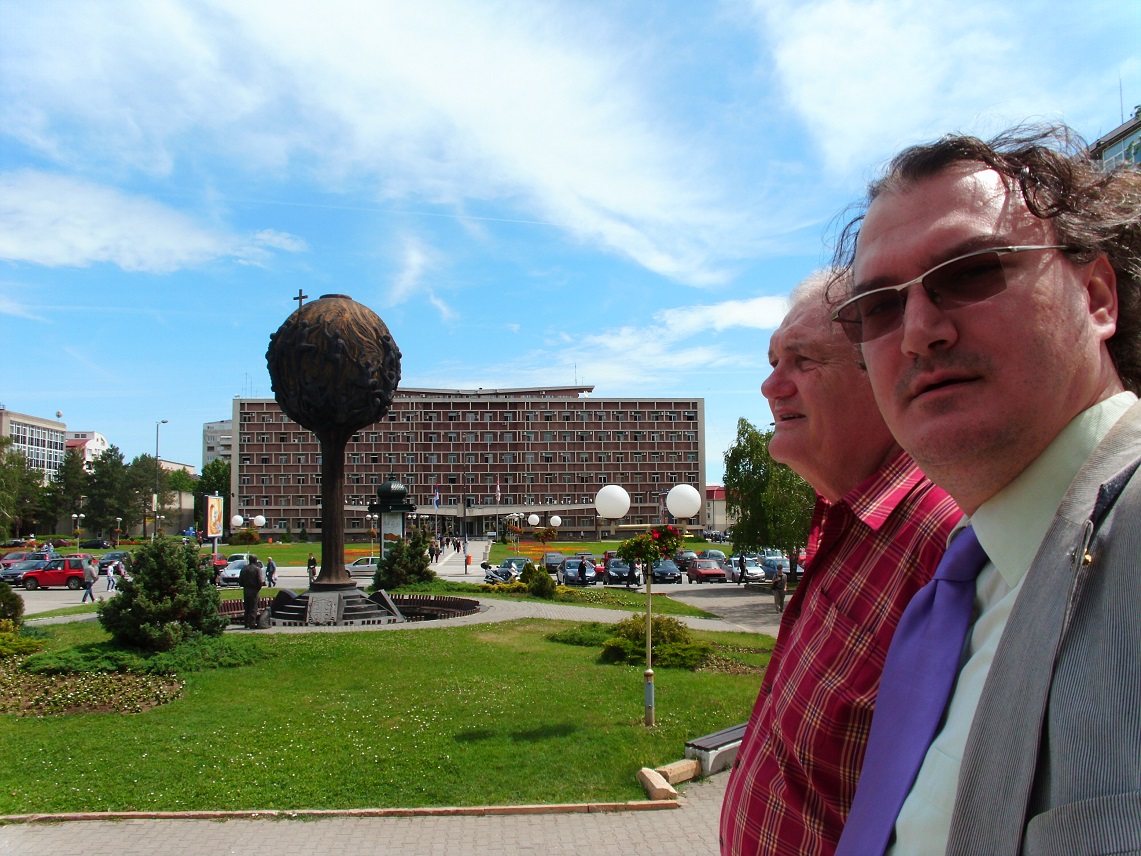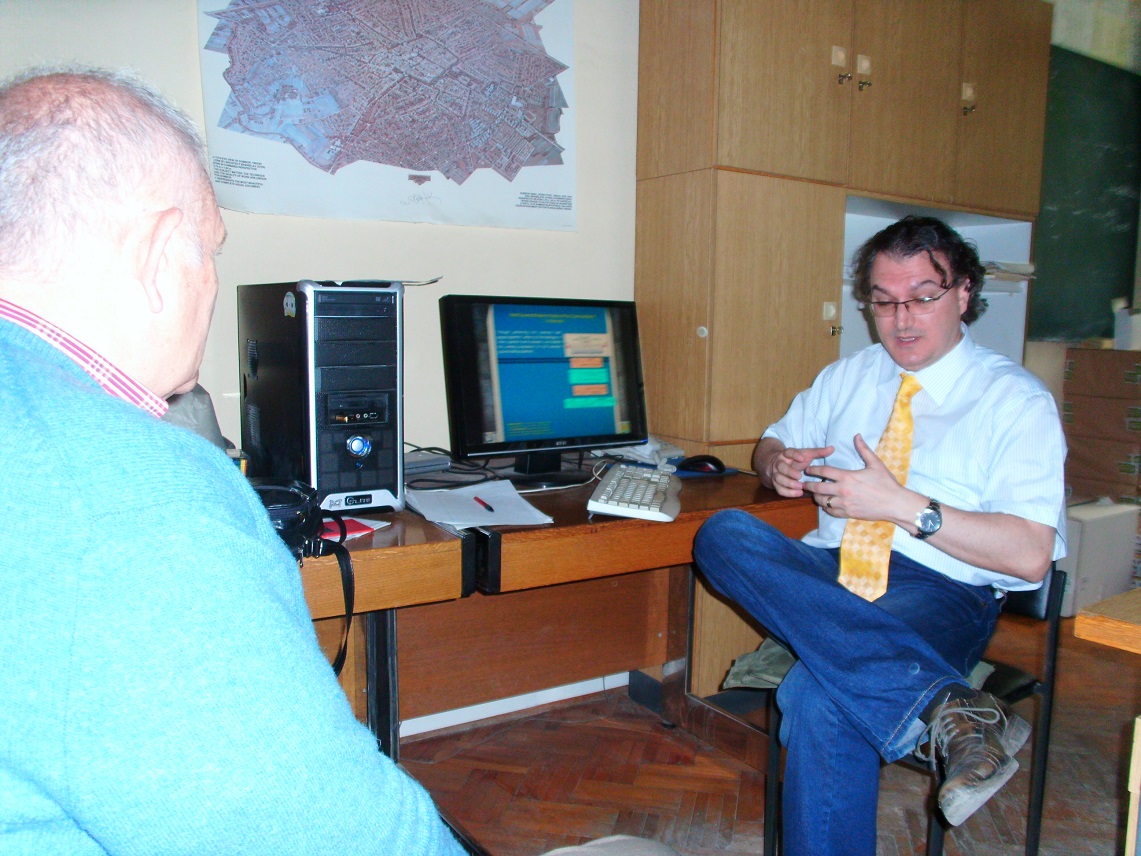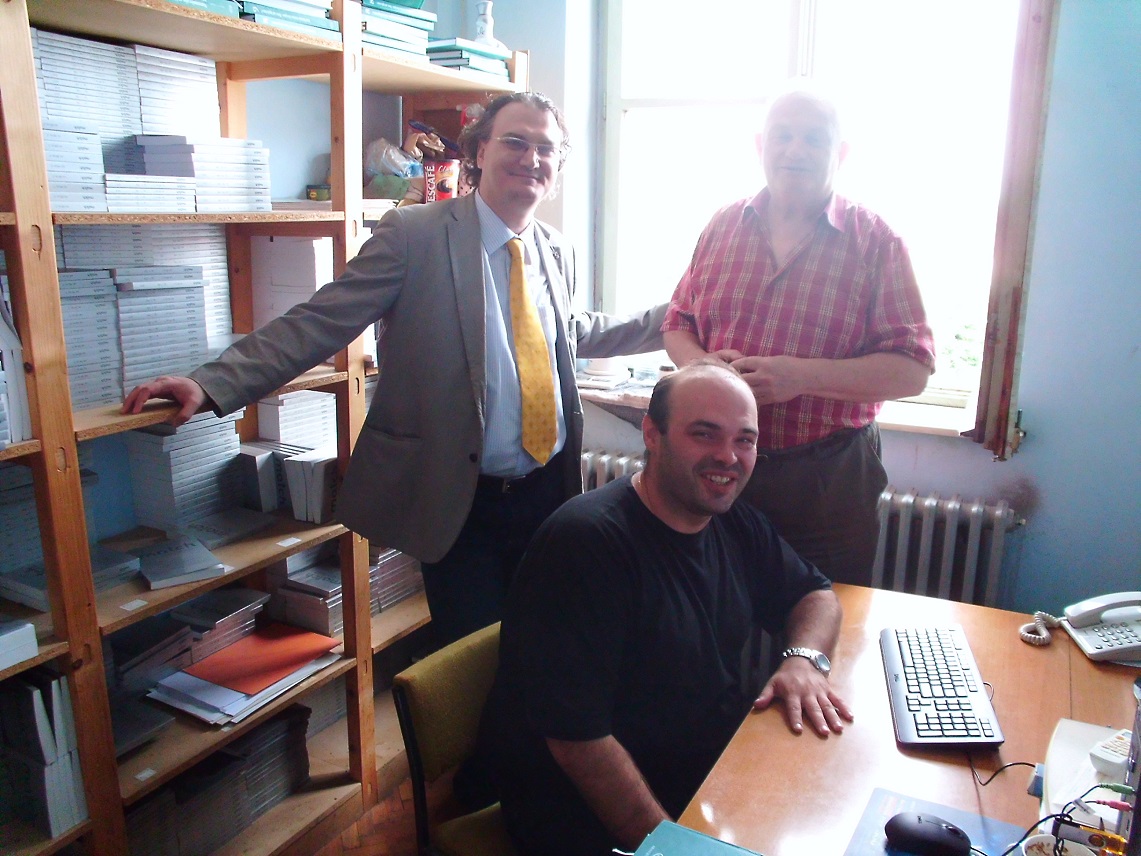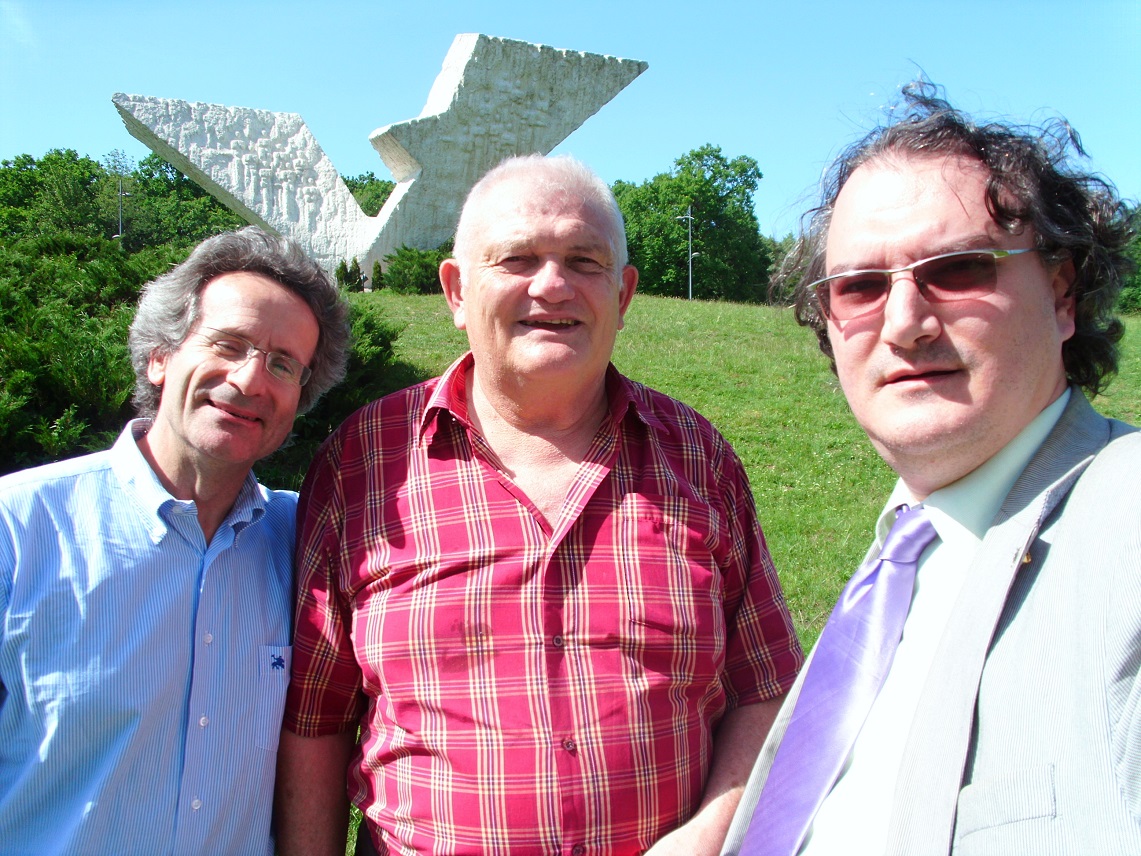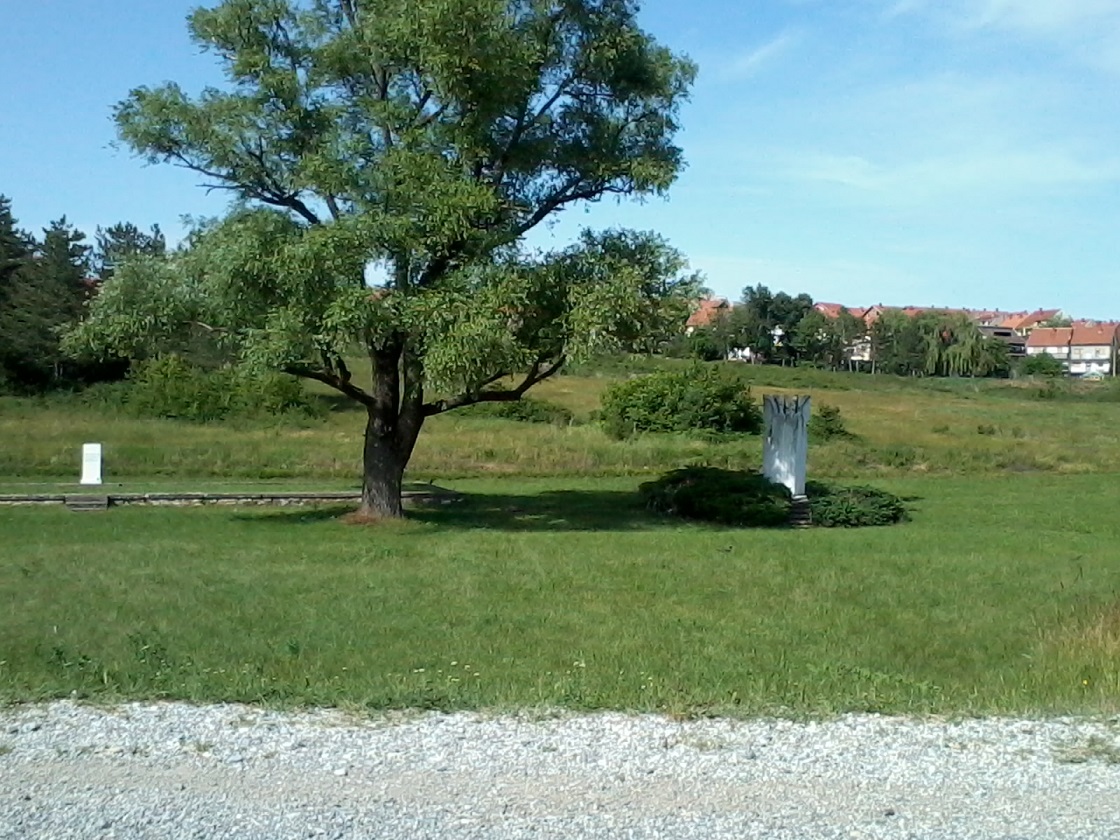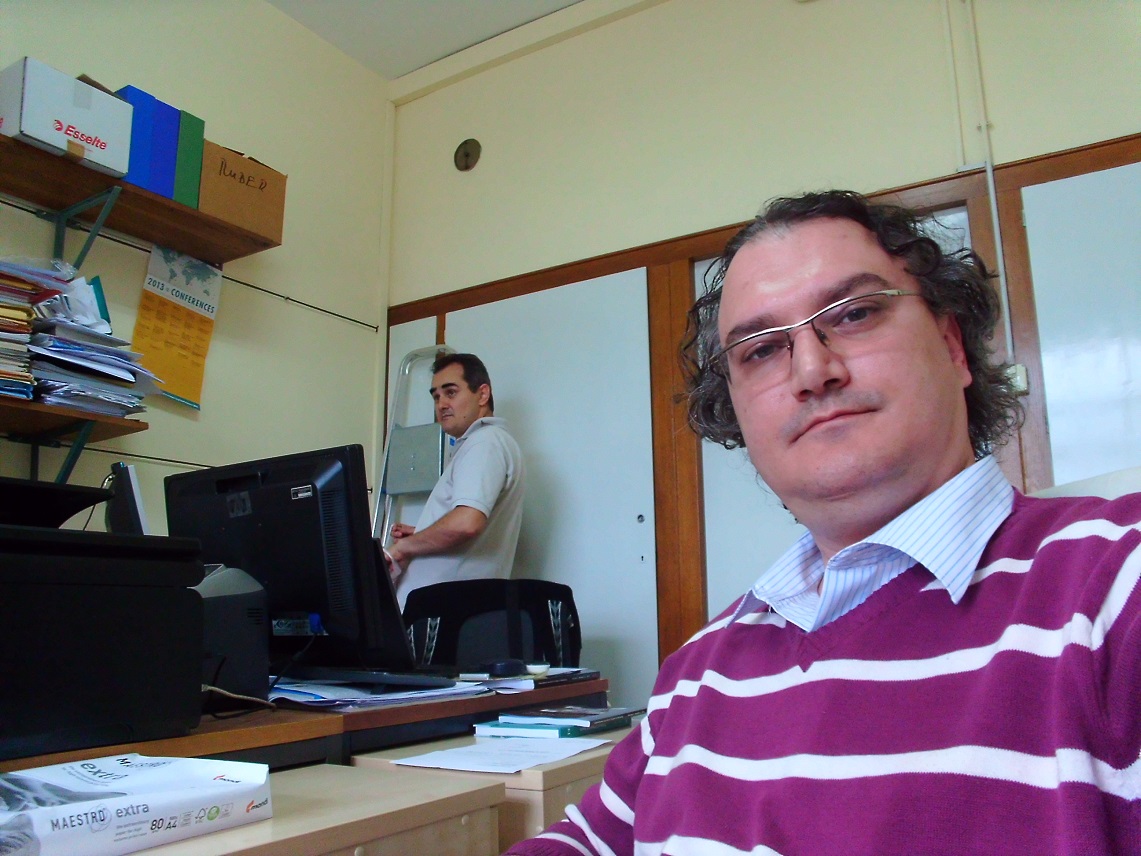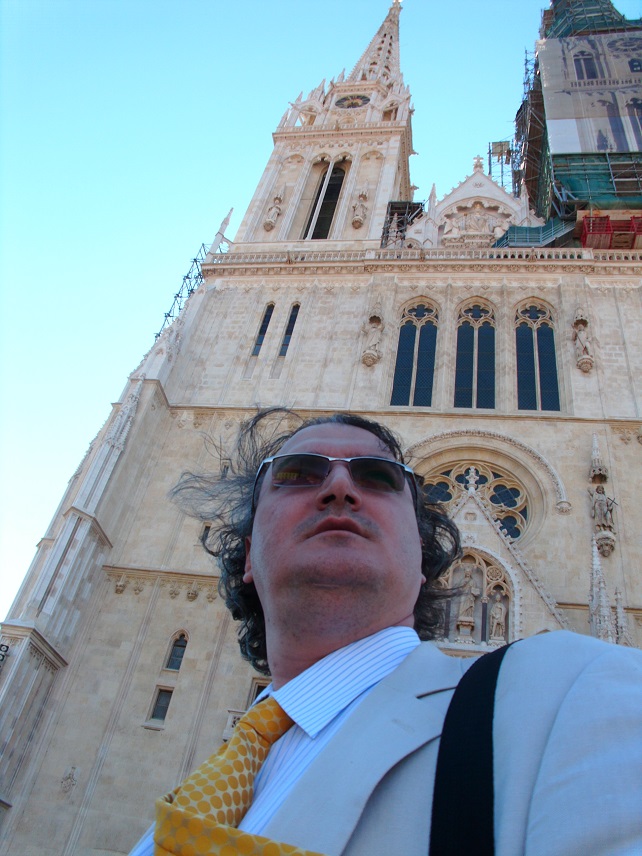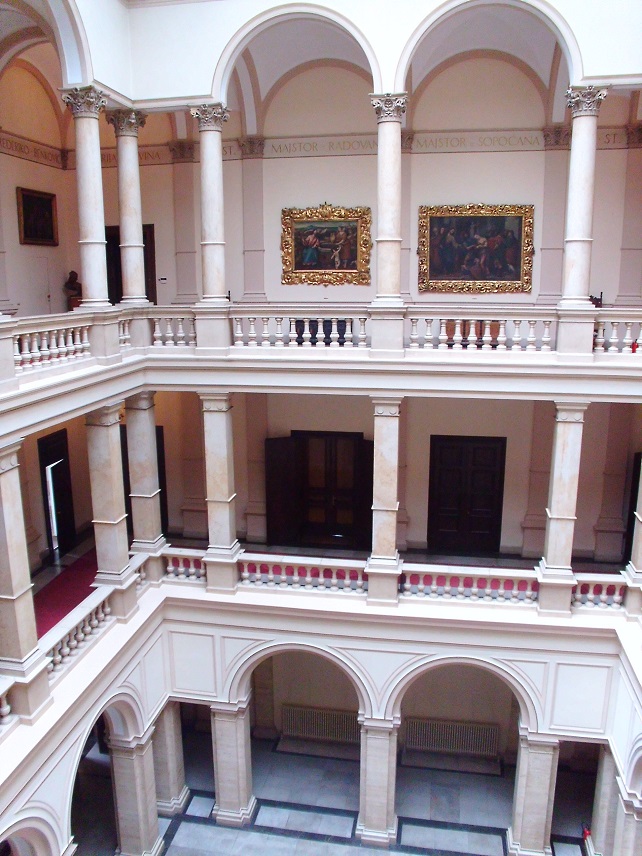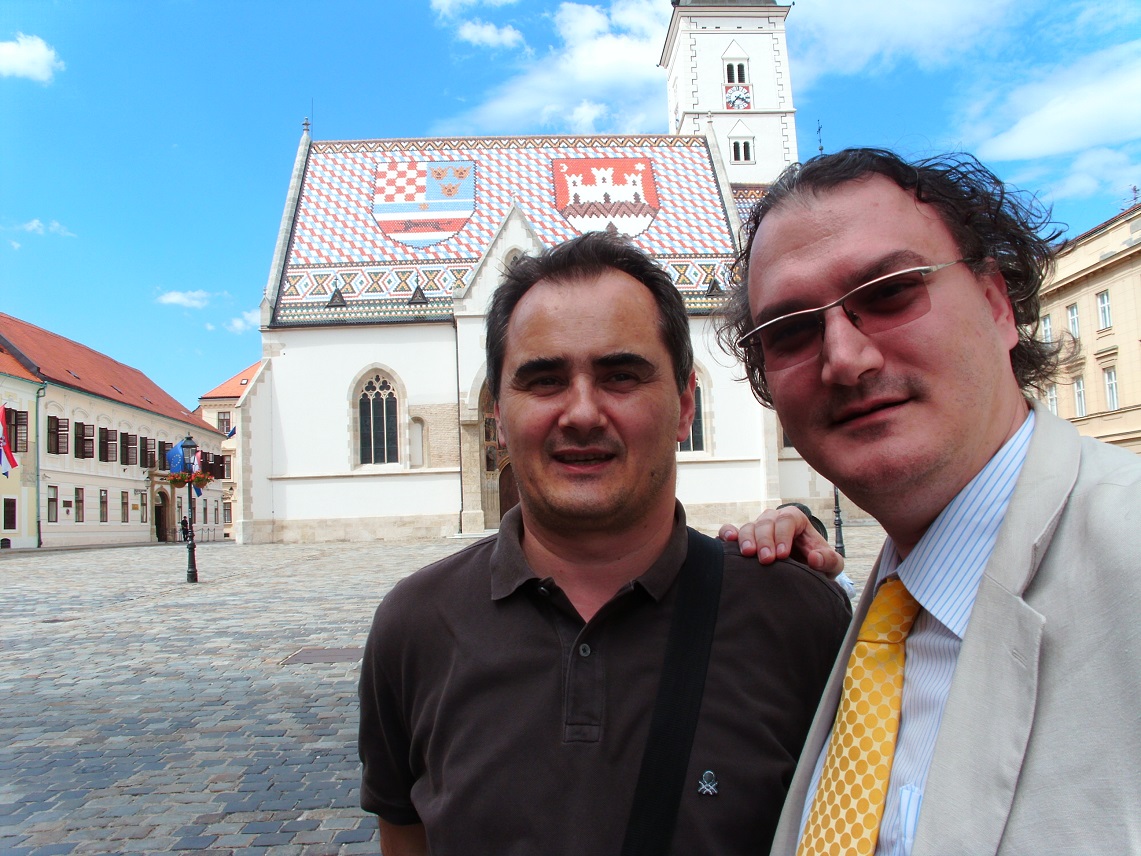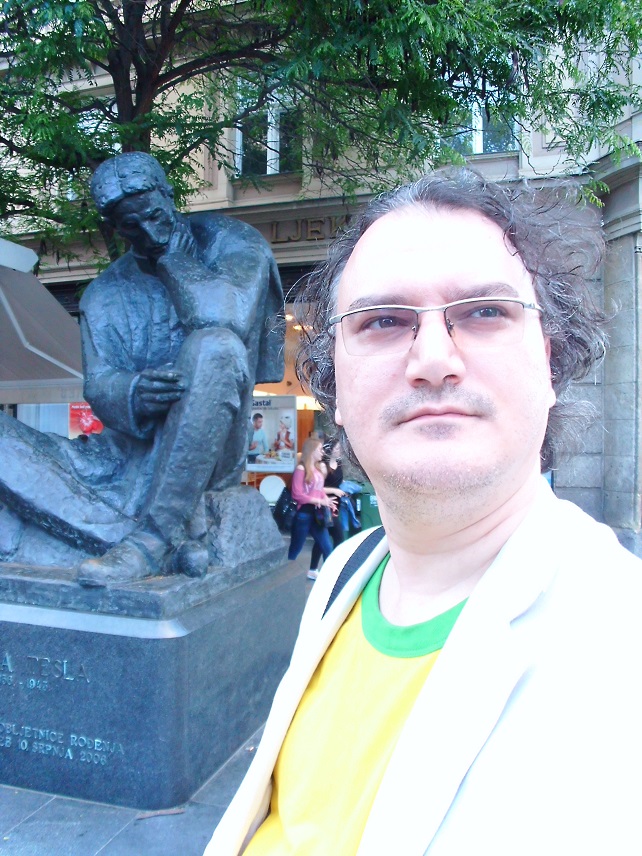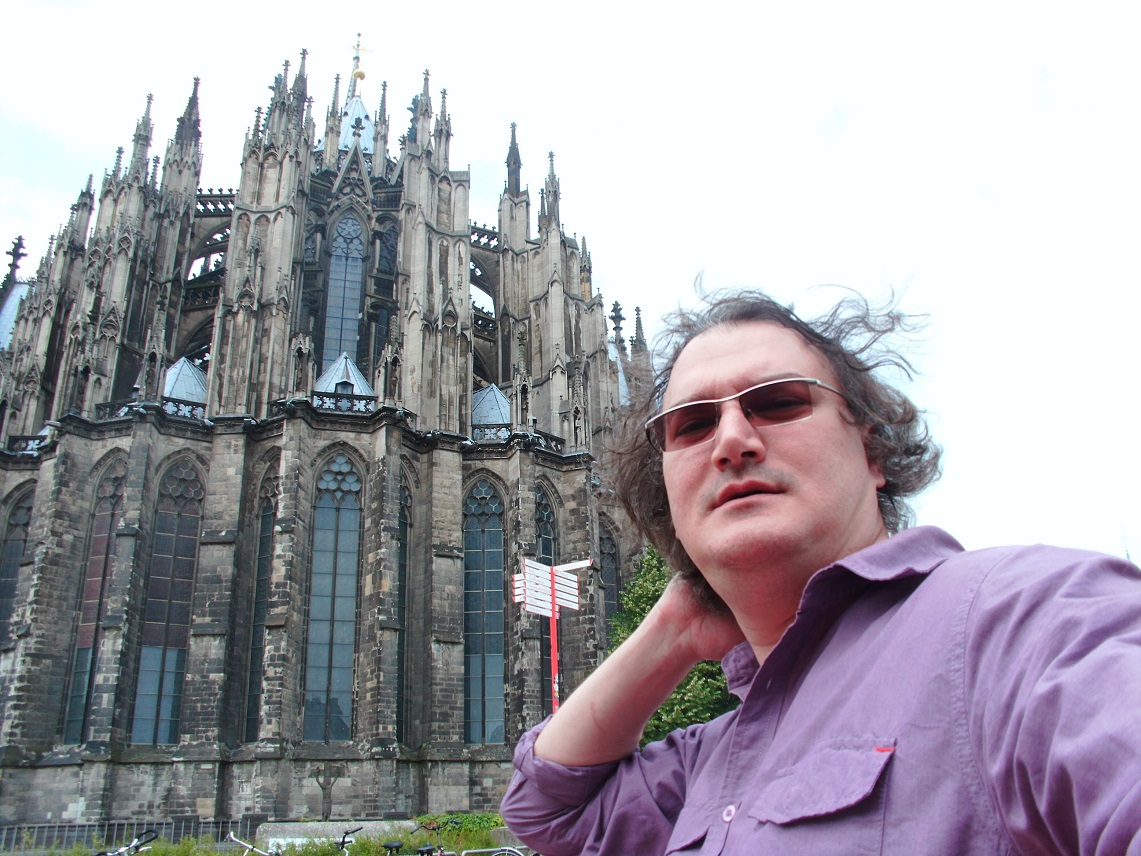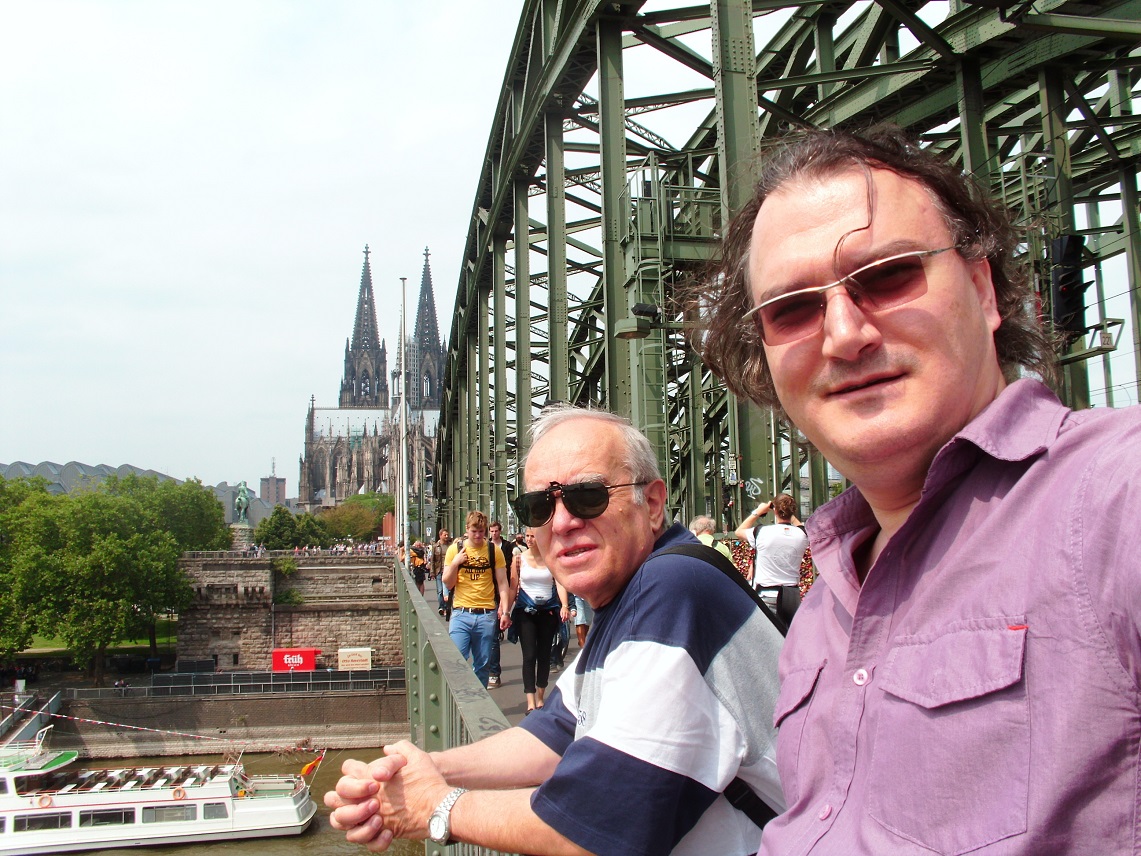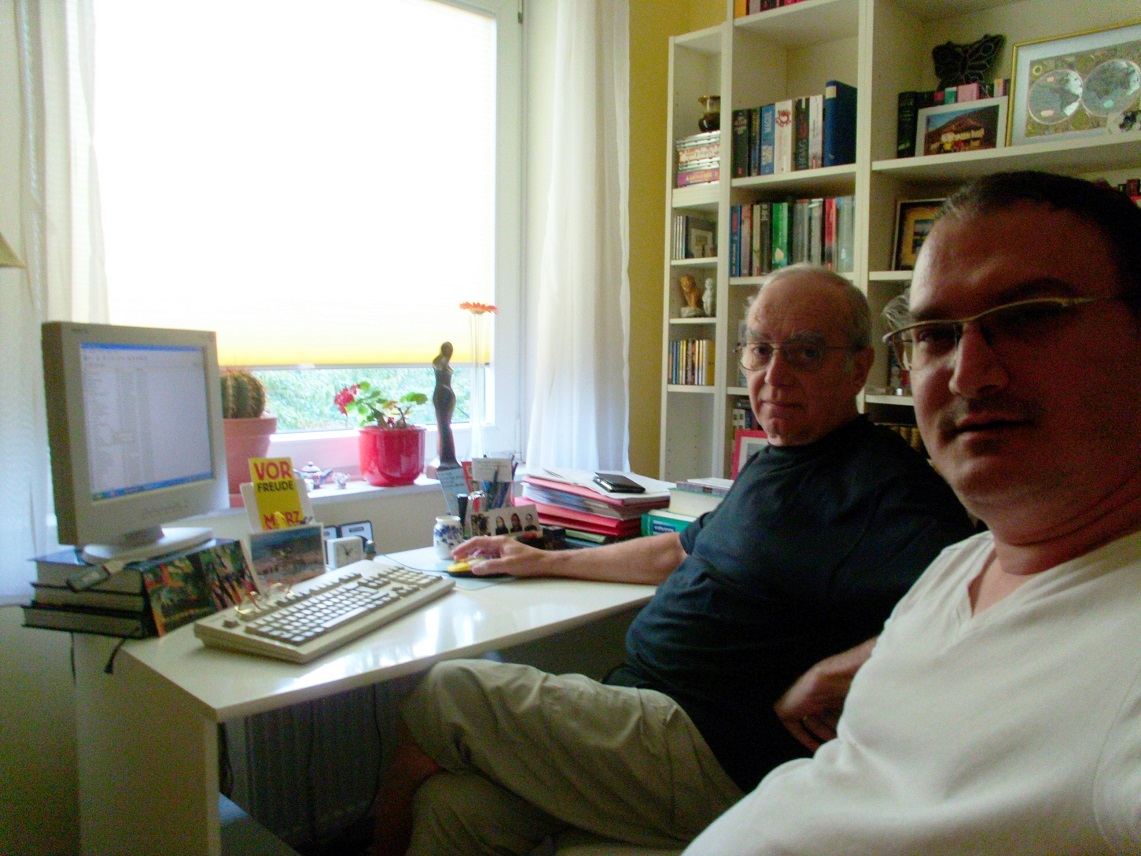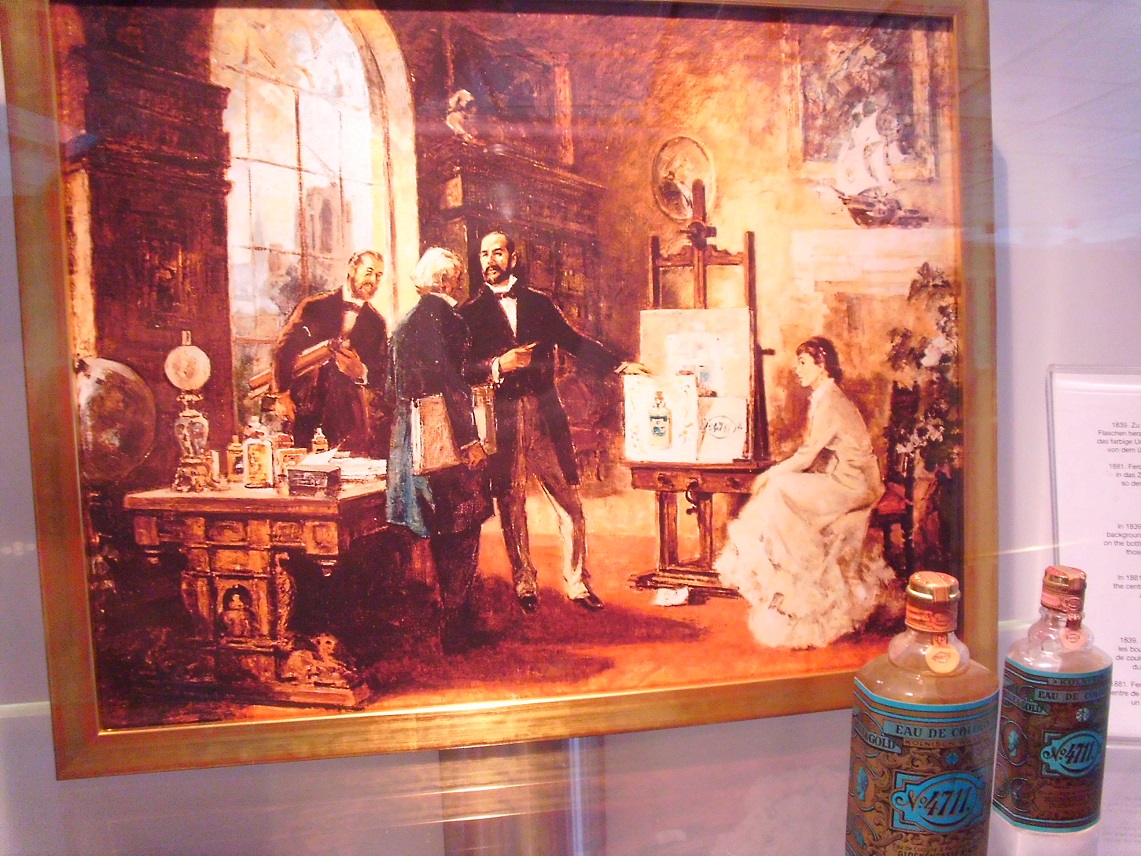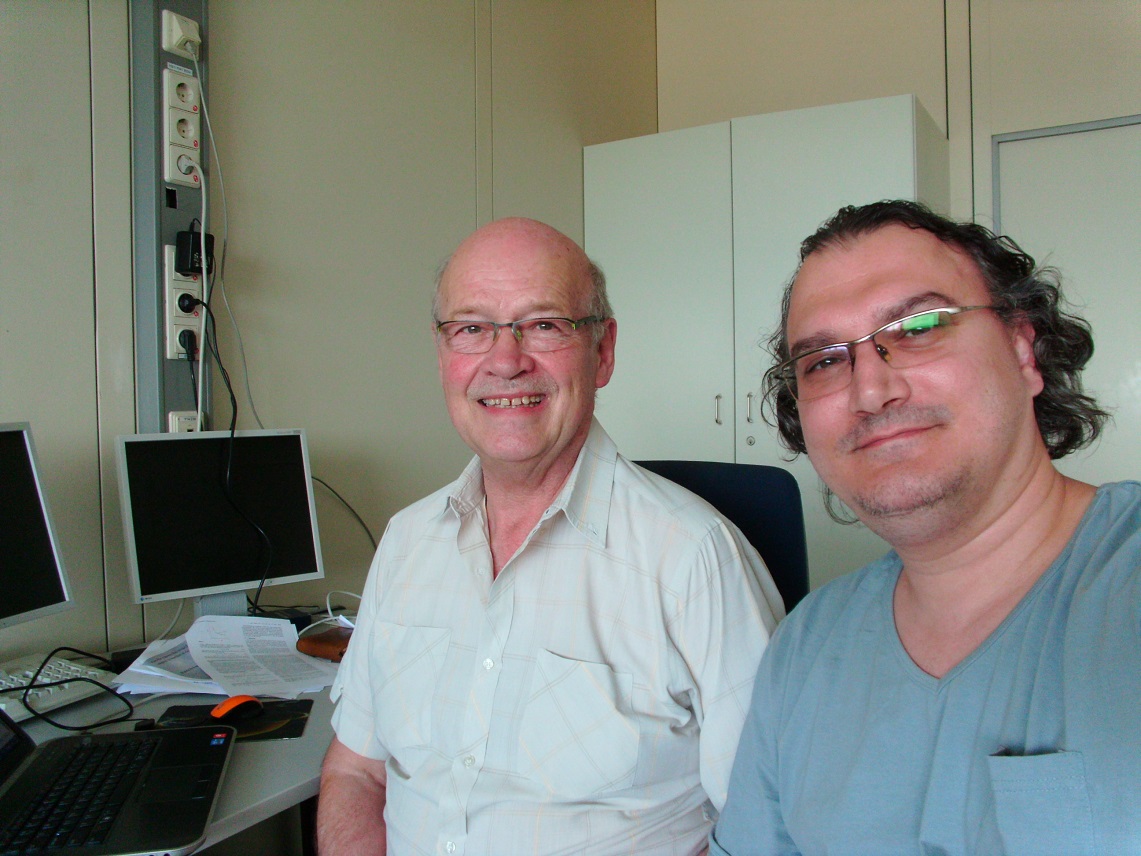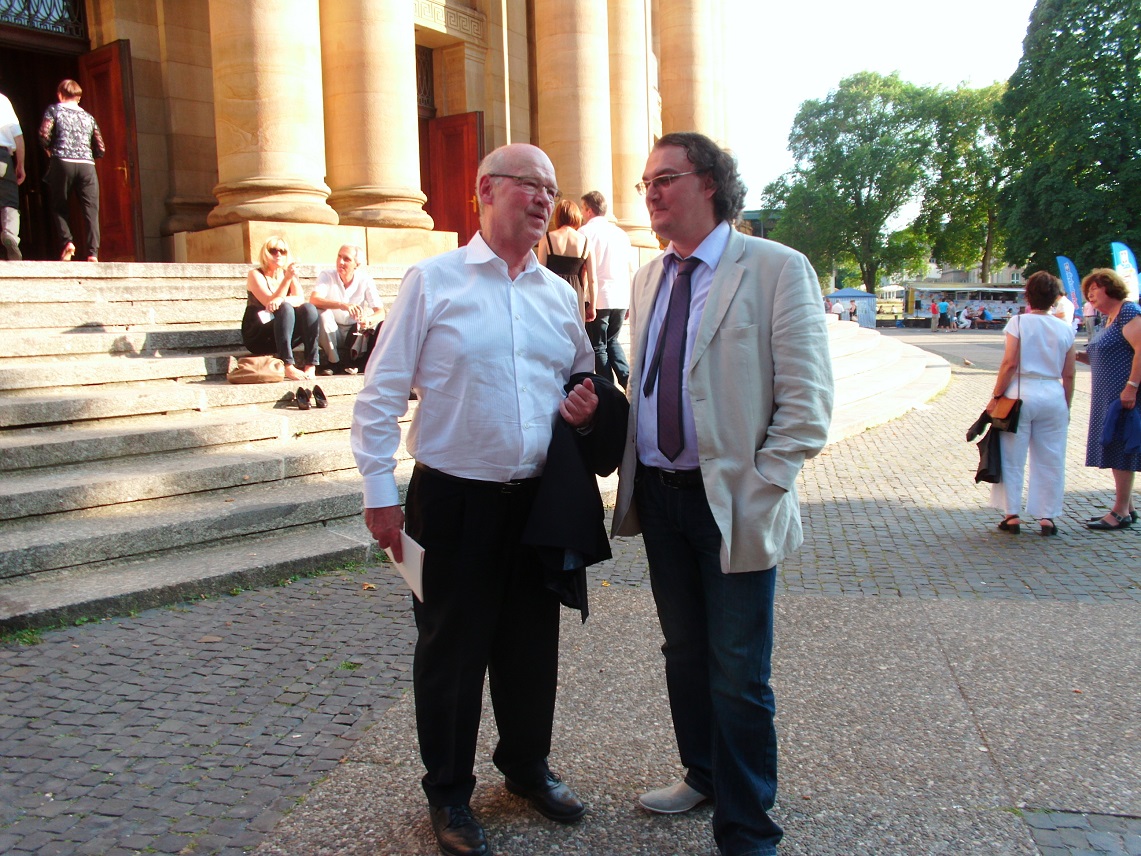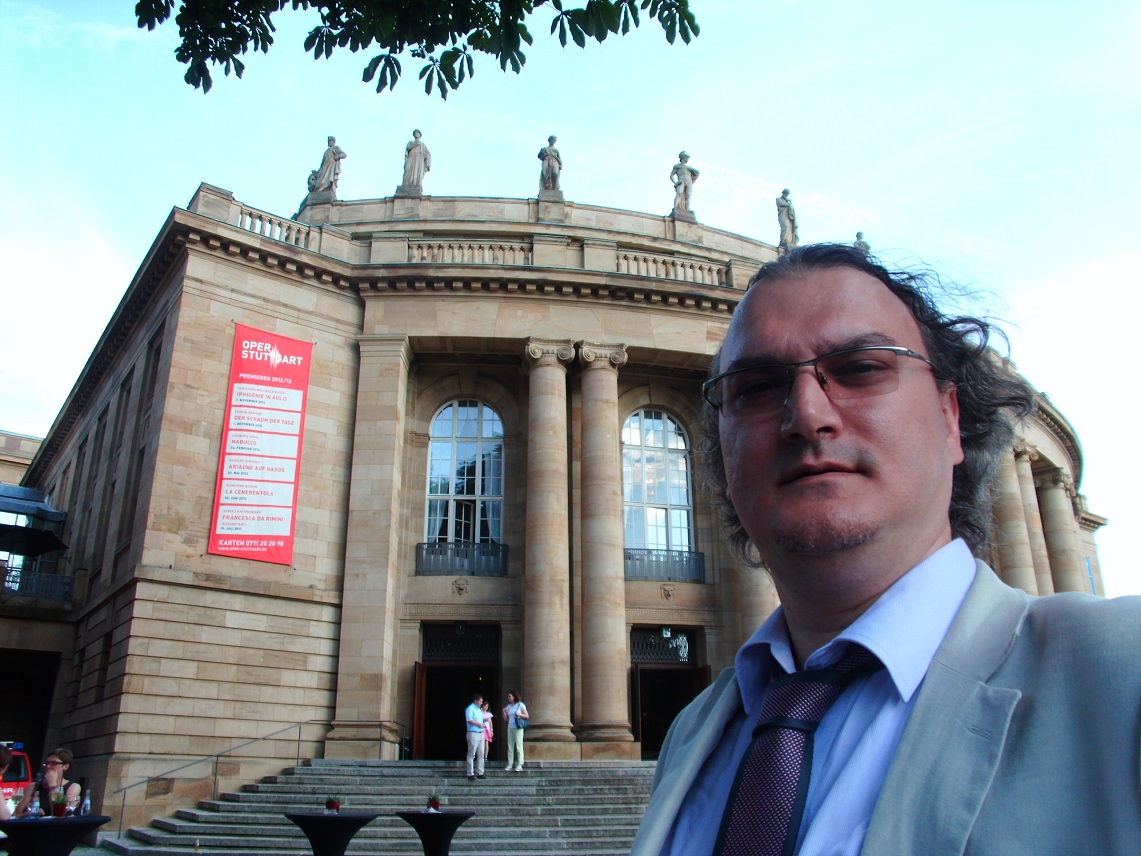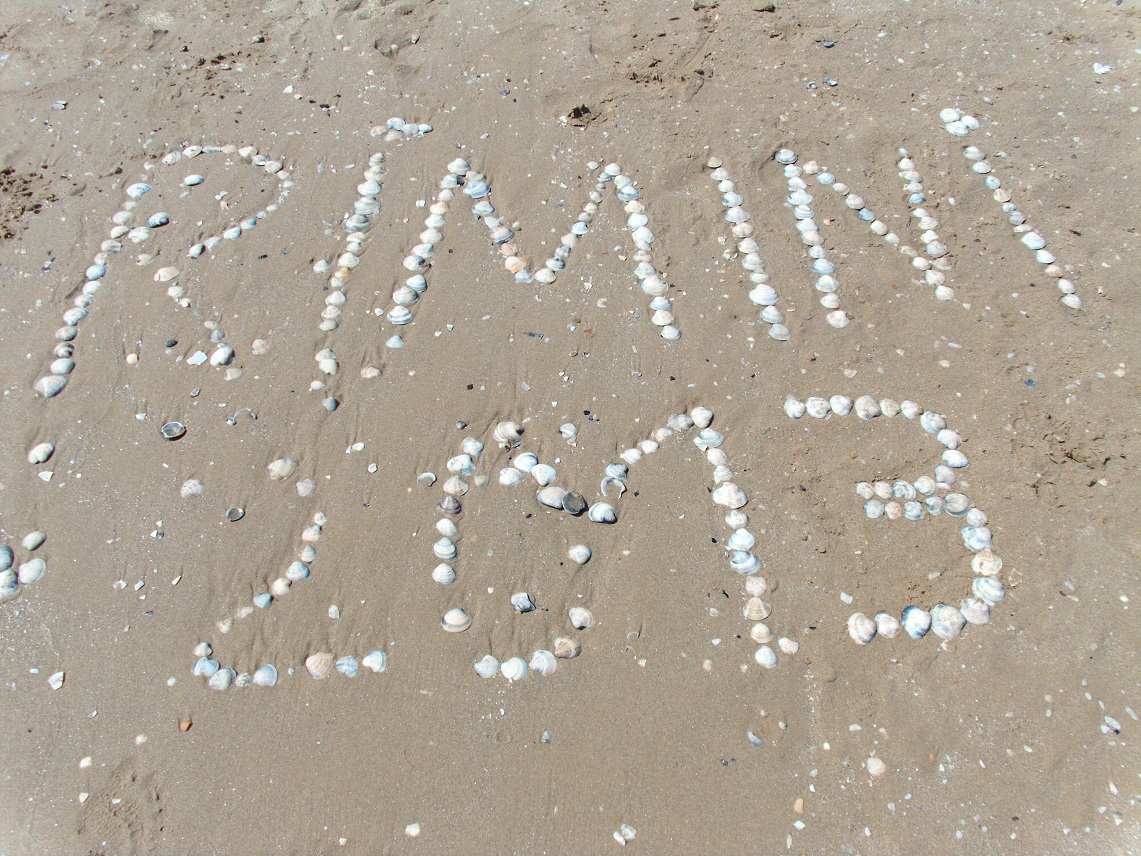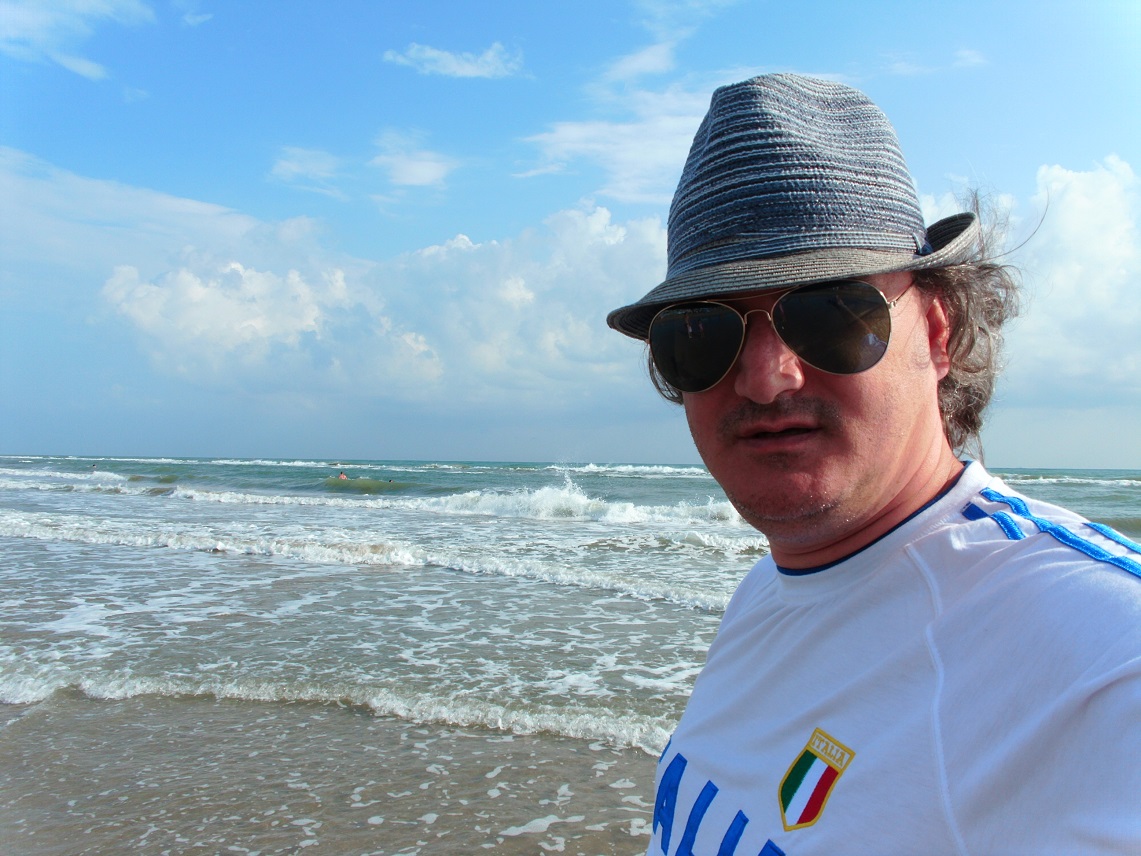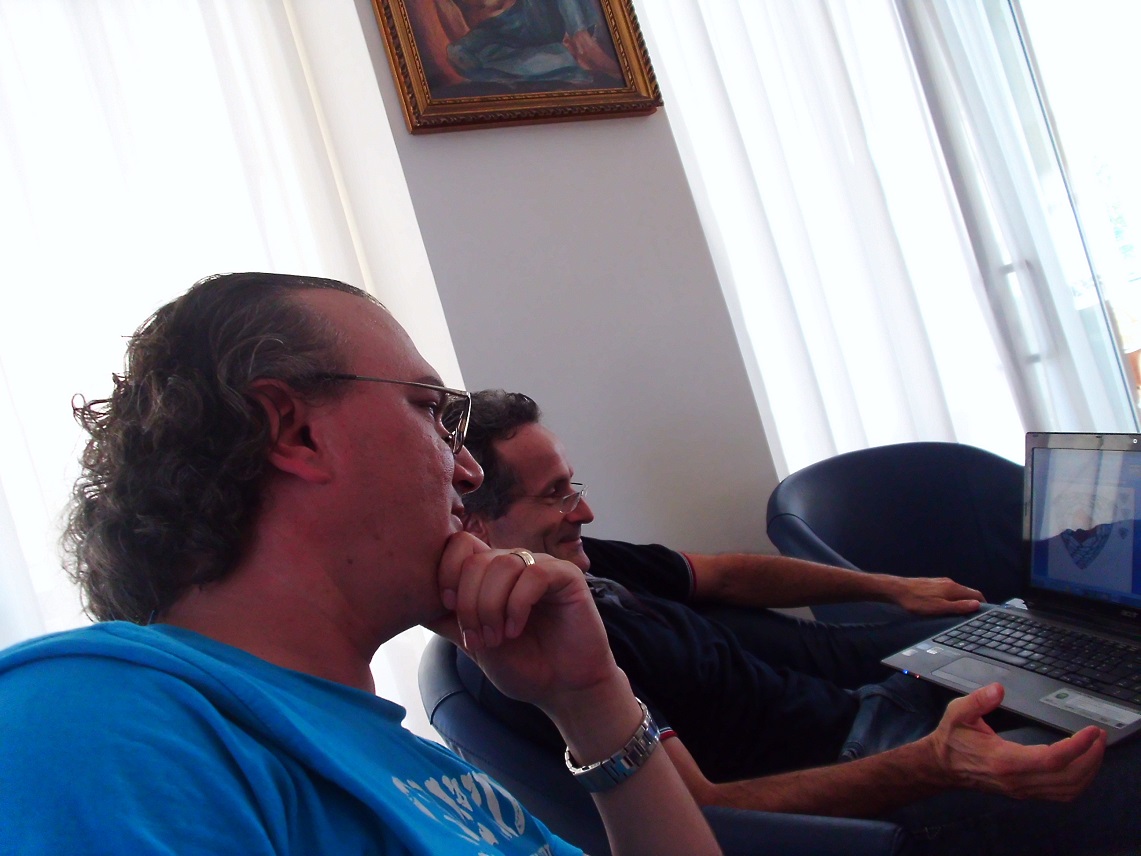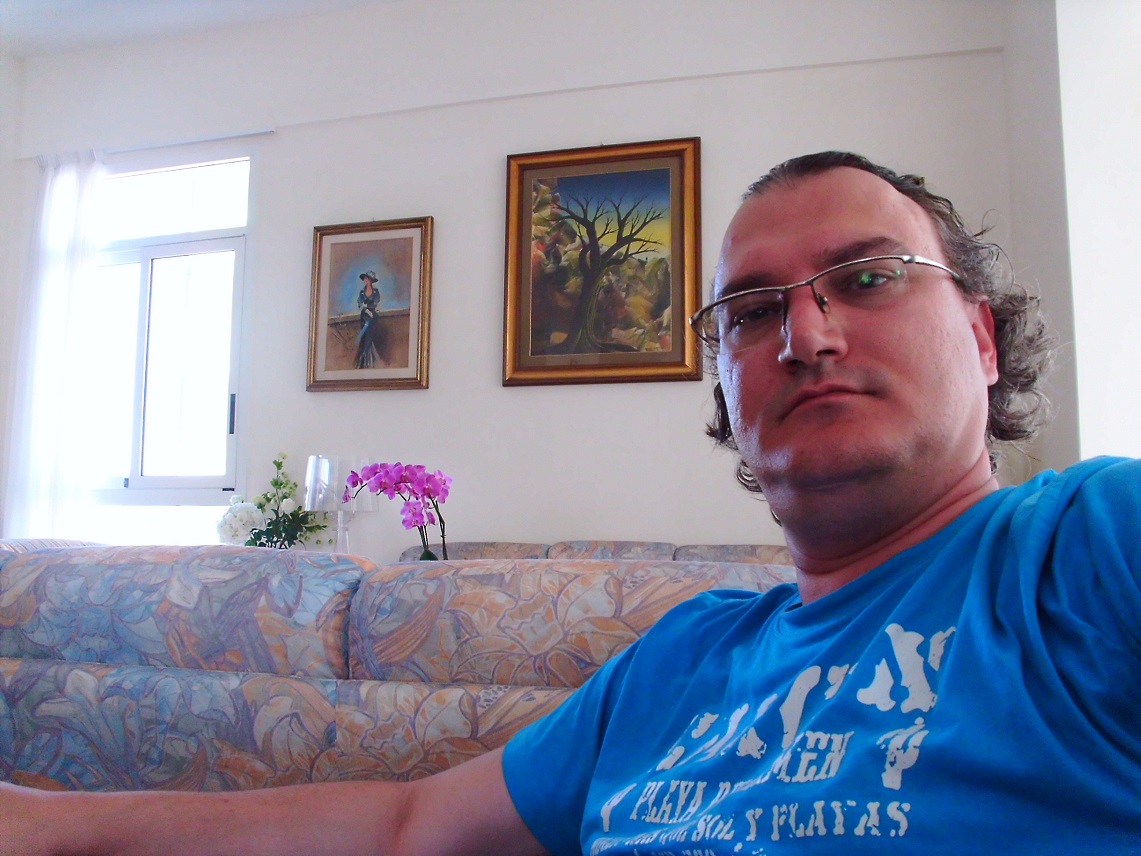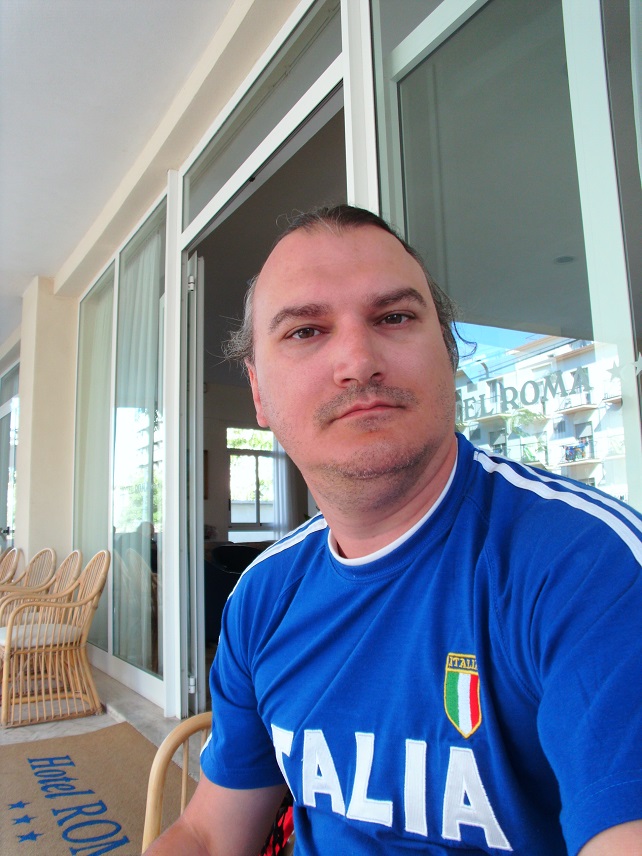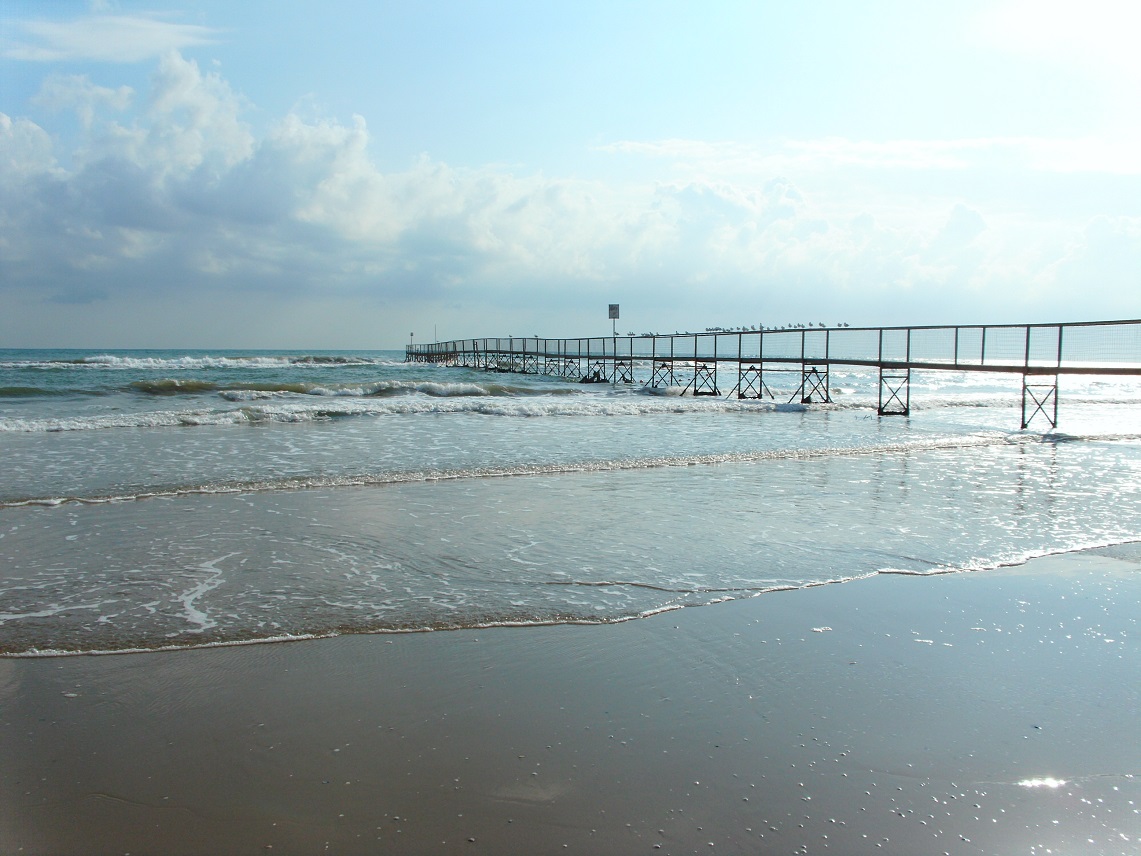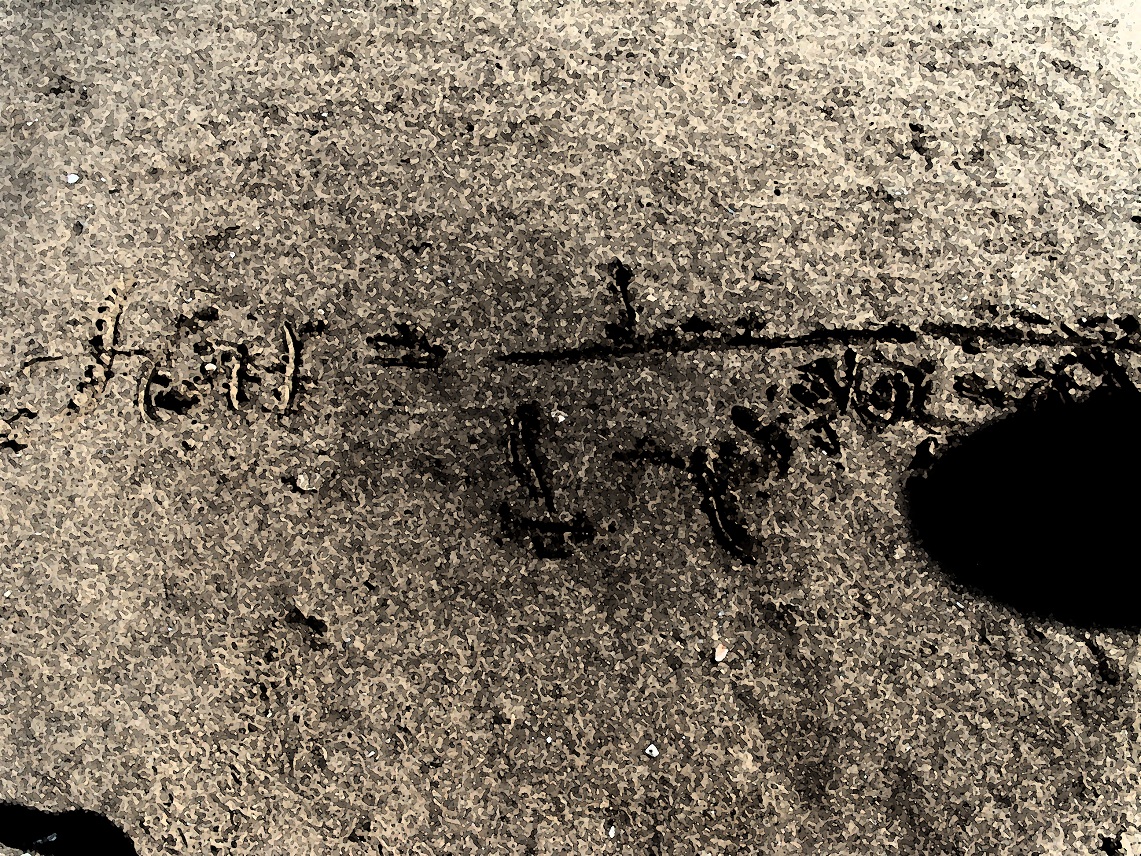Director Grant National-CNCSIS-TE-16
ACCOMPLISHMENTS IN YEAR 2013
I. ISI Papers:
|
Putz M.V., Dudaș N.A. |
Variational principles for mechanistic quantitative structure–activity relationship (QSAR) studies: application on uracil derivatives’ anti-HIV action, Structural Chemistry (2013), in press (ISI Impact Factor ~ 1.8); DOI: 10.1007/s11224-013-0249-6; URL: http://link.springer.com/article/10.1007%2Fs11224-013-0249-6 |
|
Putz M.V., Chattaraj P.K. |
Electrophilicity Kernel and its Hierarchy through Softness in Conceptual Density Functional Theory, International Journal of Quantum Chemistry (2013) Volume 113 (18), pp. 2163-2171 (ISI Impact Factor ~ 1.4); DOI: 10.1002/qua.24473; URL: http://onlinelibrary.wiley.com/doi/10.1002/qua.24473/abstract |
|
Putz M.V. |
Koopmans’ Analysis of Chemical Hardness with Spectral Like Resolution, The Scientific World Journal (2013) Volume 2013, Article ID 348415, 14 pages. (ISI Impact Factor ~ 1.730); DOI: 10.1155/2013/348415 ; |
|
Putz M.V., Dudaș N.A. |
Determining Chemical Reactivity Driving Biological Activity by SMILES Transformations: The Anti-HIV Pyrimidines’ Bonding Mechanism, Molecules (2013) Volume 18 (8), pp. 9061-9116 Special Issue "Computational Chemistry" (ISI Impact Factor ~2.428) DOI: 10.3390/molecules18089061; |
|
Putz M.V., Tudoran A.M., Putz A.M. |
Structure-Properties and Chemical-Bio/Ecological Interactions of PAHs. From Synthesis to Cosmic Spectral Lines and Nanochemistry, to Reactivity Driving Lipophilicity, Current Organic Chemistry (2013), in press; Hot Topic Special Issue Ref: HT-SBJ-COC-0050, Topic: Polycyclic Aromatic Hydrocarbons: From Structure to Chemical Reactivity to Biological Activity, Guest Editors: Mihai V. Putz, Publication Date: December 2013 (ISI Impact Factor ~3.); DOI: ; |
|
Tarko L., Putz M.V., Ionașcu C., Putz A.M. |
QSTR studies regarding the ECOSAR toxicity of benzene-carboxilic acids' esters to fathead minnow fish (Pimephales promelas), Current Computer Aided Drug Design (2013), pending revision; Hot Topic Special Issue Ref: HT-SBJ-CCADD-0004, Topic:Current Challenges in QSAR/QSPR Analysis, Guest Editors: Mihai V. Putz, Publication Date: September 2013 (ISI Impact Factor ~1.8) DOI: ; |
|
Avram S., Mernea M., Mihailescu D., Duda-Seiman C., Duda-Seiman D., Putz M.V. |
Mitotic checkpoint proteins Mad1 and Mad2 – Structural and genomic perspectives with implication in genetic disorders, Current Computer Aided Drug Design (2013), pending revision; Hot Topic Special Issue Ref: HT-SBJ-CCADD-0004, Topic:Current Challenges in QSAR/QSPR Analysis, Guest Editors: Mihai V. Putz, Publication Date: September 2013 (ISI Impact Factor ~1.8) DOI: ; |
|
Putz M.V., Ori O. |
Bondonic High Order Effects in Honeycomb Nanoribbons with Stone-Wales Topological Defects, submitted (ISI Impact Factor ~) |
II. BDI Articles:
|
Putz M.V. |
Chemical Orthogonal Spaces (COSs): From Structure to Reactivity to Biological Activity, International Journal of Chemical Modeling 5(1) (2013) 1-33; URL: https://www.novapublishers.com/catalog/product_info.php?products_id=41525 |
|
Putz M.V. |
Spectral-Diagonal Approach of Structure-Property (Activity) Relationships: SD-QSP(A)R. The General Formalism, International Journal of Chemical Modeling 5(2/3) (2013) 000-000; URL: https://www.novapublishers.com/catalog/product_info.php?products_id=46574 |
|
Putz M.V. |
Bonding in Orthogonal Space of Chemical Structure: From in cerebro to in silico, International Journal of Chemical Modeling 5(4) (2013), accepted; URL: |
|
Putz M.V., Seiman-Duda C., Ionașcu C., Seiman-Duda D., Putz A.M. |
Chain vs. Euclidian Spectral-SAR path of Calcium Channels Blockers of dihydropyridines type against cardiovascular diseases, International Journal of Chemical Modeling 6(1) (2014), in preparation; URL: |
|
Putz M.V., Putz A.M., Ori O., Cataldo F. |
Bondonic Information from Mesosystems’s Spectra, in EXOTIC PROPERTIES OF CARBON NANOMATTER: ADVANCES IN PHYSICS AND CHEMISTRY, Mihai V. Putz, Ottorino Ori (Eds.), Springer Verlag, London, 2014, Chapter X, in preparation; DOI: ; URL: |
|
Putz M.V., Pitulice L., Dascălu D., Isac D. |
Hückel Theory of Carbon Systems: Exotic Features and Current Challenges, in EXOTIC PROPERTIES OF CARBON NANOMATTER: ADVANCES IN PHYSICS AND CHEMISTRY, Mihai V. Putz, Ottorino Ori (Eds.), Springer Verlag, London, 2014, Chapter X, in preparation; DOI: ; URL: |
|
Putz M.V., Mirică M., Tudoran A.M. |
Towards Electrochemical Membranes by Optical Lattices, in EXOTIC PROPERTIES OF CARBON NANOMATTER: ADVANCES IN PHYSICS AND CHEMISTRY, Mihai V. Putz, Ottorino Ori (Eds.), Springer Verlag, London, 2014, Chapter X, in preparation; DOI: ; URL: |
|
Putz M.V., Ori O.
|
Quantum Codes for Graphs in Molecular Topology, in EXOTIC PROPERTIES OF CARBON NANOMATTER: ADVANCES IN PHYSICS AND CHEMISTRY, Mihai V. Putz, Ottorino Ori (Eds.), Springer Verlag, London, 2014, Chapter X, in preparation; DOI: ; URL: |
III. Chapters in Edited Books:
|
Putz M.V. |
Nano-Universe Expanding Macro-Universe: From Elementary Particles to Dark Matter and Energy, In: RESEARCH HORIZONS OF NANOSYSTEMS: STRUCTURE, PROPERTIES AND INTERACTIONS, Mihai V. Putz (Ed.), Apple Academics Press, New Jersey & Ontario, USA & Canada (2013), ISBN: 978-192-689-590-1; URL: http://www.appleacademicpress.com/title.php?id=9781926895901 |
|
Putz, M.V., Ori O, Diudea M.V. |
Bondonic Electronic Properties of 2D Graphenic Lattices with Structural Defects, In: GRAPHENE SCIENCE HANDBOOK: ELECTRICAL AND OPTICAL PROPERTIES, Mahmood Aliofkhazraei; Nasar Ali; William I. Milne; Cengiz S. Ozkan; Stanislaw Mitura; Juana L. Gervasoni (Eds.), CRC Pres, Taylor & Francis Group, Boca Raton, Florida, U.S.A. (2013), Submitted; ISBN-13: 978-14-6659-131-8; URL: http://www.books-express.ro/book/9781466591318/Graphene-Science-Handbook.html |
|
Ori O, Putz M.V., Gutman I., Schwerdtfeger P. |
Generalized Stone-Wales Transformations for Fullerene Graphs Derived from Berge’s Switching Theorem, In: ANTE GRAOVAC - LIFE AND WORKS, I. Gutman, B. Pokric, D. Vukicevic (Eds.), Mathematical Chemistry Monographs, Vol. 16, Kragujevac, Serbia (2014). Invited, in Preparation; xxx + xxx pp. Hardcover, ISBN: 978-86-6009-021-0; |
IV. International Books:
|
Putz M.V. (Editor) |
ADVANCES IN CHEMICAL MODELING – VOL. IV, NOVA Science Publishers Inc., New York, 2013, pp 500 (cca.), ISBN (Hardcover): 978-1-62808-186-2; URL: https://www.novapublishers.com/catalog/product_info.php?products_id=43018 |
|
Putz M.V. (Editor) |
RESEARCH HORIZONS OF NANOSYSTEMS: STRUCTURE, PROPERTIES AND INTERACTIONS, Apple Academics Press, New Jersey & Ontario, USA & Canada (2014), ISBN (Hardcover): 978-192-689-590-1; URL: http://www.appleacademicpress.com/title.php?id=9781926895901 |
|
Putz M.V. |
QUANTUM AND OPTICAL DYNAMICS OF MATTER FOR NANOTECHNOLOGY IGI Global, Hershey Passadena, USA xxx +500 p., 130 illus. (2014) DOI: 10.4018/978-1-4666-4687-2, ISBN-13 (Hardcover): 978-146-664-687-2, ISBN-10: 146-664-687-X, EISBN-13: 978-146-664-688-9 URL: http://www.igi-global.com/book/quantum-optical-dynamics-matter-nanotechnology/77401 |
|
Putz M.V., Ori O. (Editors) |
EXOTIC PROPERTIES OF CARBON NANOMATTER: ADVANCES IN PHYSICS AND CHEMISTRY, Springer Verlag, London, Series CARBON MATERIALS: CHEMISTRY AND PHYSICS xxx + xxx p., xx illus., x in color (2014) ISBN-13(Hardcover): ; |
V. Workshops, Symposia, and Presentations:
|
During 18-22 March 2013, Mihai V. Putz (MVP) visited Babeș-Bolyai University (BBU) of Cluj with two-fold scientifically mission: (i) performing the public defense of his Habilitation Thesis - Chemical Orthogonal Spaces of Atoms and Molecules - within the Chemistry fundamental domain of natural sciences, through containing in a great extent the 2010-2012 results of the present grant, widely confirmed by Alma Mater, national and international appreciations, being with this occasion once more debated and refined with the positive output also by the Habilitation commission; however, the habil. presentation incorporated 2/3 of the synthesis of the present research project equally opening new promising approaches of chemical reactivity, and recently including also the chemical topology and the eco/pharmaco/biological activities in specific modeling spaces nonreductive to the custom physical Cartesians, yet maintaining the independent information and therefore the orthogonality as well aiming the (qvasi)complete description of the structure-, reactivity-, and interaction- chemical space. (ii) Co-directory (jointly with prof. dr. Mircea V. Diudea of BBU) and presenting of the results for the first paper of the above ISI works’ section in the international workshop organized by European Society of Mathematical Chemistry and the Babeș-Bolyai University/Faculty of Chemistry and Chemical Engineering, under the talk called ; there it was advanced the idea of chemical reactivity – driving – biological activity by means of the fundamental chemical reactivity indices (electronegativity, chemical hardness, chemical power, electrophilicity) and of their variational principles, alongside the original ansatz in considering the defolding molecules with the help of the SMILES (simplified molecular-input line-entry system) formalism in modeling the cellular lipidic membranes’ transduction; the results attracted a vivid interest and thanks to the present colleagues’ interventions and of prof. dr. Ionel I. Mangalagiu (from Al. I. Cuza University of Iasi) in special many precious information and advises were received turning to completion of the 4th paper from above ISI works’ section, by considering the SMILES conformations not just to the screening stage of a QSAR analysis but also in performing the effective correlations, particularly employing the LoSMoC (the longest SMILES molecular chain) and BraS (the Branching SMILES) versions; the last results were indeed spectacular proving the necessity of SMILES stage sin establishing of the mechanism for the chemical-biological interaction, eventually leading either with the ligand-receptor chemical binding stabilization, or with confirmation of the chemical bonding scenario (i.e. electronegativity > chemical hardness > chemical power > electrophilicity) as was just found in the 5th paper of the above ISI works’ list. |
|
In the period 14-17 Iunie, Mihai V. Putz (MVP) made the study visit at University of Parma for meeting the Prof. Franco Ugozzoli, a noted physicist chairing the couses of General and Anorganic Chemistry at the Faculty of Engineering, for prospecting the an inter-university agreement of Erasmus type for 2014-20120 funding leg of Erasmus-for-All European program. The meeting was facilitated by the common collaborator and friend Dr. Ottorino Otto (OO, Actinium Research, Roma, deputy at Parma), together with whom MVP continued in the 18-22 June the joint co-directorship of the 58th edition of the “Solid State Physics” International Summer School –generally managed by Prof. Giorgio Bendek (Univ. Milano-Bicocca) - at Erice under this year “Carbon Topology” workshop. Erice, a Sicily town with mythological origins, being Erice the fruit of the love between Neptune and Venus, with its multi-millennium history is actually known worldwide as the City of Peace and Science, arrived at the 50th anniversary from the launching of its ETTORE MAJORANA Foundation and Centre for Scientific Culture (1961-962-1963) since its famous statement for Science as catalyzer of Peace in contrast with Technology that is to often regarded as a tool for powerful politics leading with virtual destroy of humanity (in original ”Science is the study of Fundamental Laws of Nature. Technology is the study of how the power of mankind can be increased”), as was in 1982 signed by the celebrated Nobel laureates in Physics Paul A.M: DIRAC and Piotr KAPITZA, along with the Nobel Physics nominated Antonio ZECHICHI – an astrophysics of large culture, excellent organizer and controversial physicist however involved in the great sub-nuclear discoveries made in the CERN history. This Centre acquired a prodigious activity in the last 50 years with about 124 schools and 1573 Courses, gathering 112,278 participants and 128 Nobelists, belonging to no les than 932 Universities and laboratories in 140 countries and nations, largely contributed towards creating a true international movement in the so called Erice Spirit (Erice Geist) including the creation of The World Federation of Scientists (WFS) fully engaged in promoting the 15 planetary emergencies (i.e. water, soil, food, energy, pollution, limits of development, climatic changes, global monitoring of planet, new military threats in the multipolar world, science and technology for developing countries to avoid a north-south environmental holocaust, the problem of organ substitution, infectious diseases, cultural pollution, common defense against cosmic objects, the huge military investments); all these bring the HH Pope John-Paul II in visiting the Centre and its activities, making the decisive statement in 1979 by recognizing that ”Science and Faith are both God’s Gifts”, in original “Scienza e Fede sono entrambe doni di Dio” as was resumed by his famous III Phrase to WFS, at his 1993 visit at Erice. In the same spirit is placed also His famous VIII Phrase saying that ”the man can perish by the technology that himself developed, and not by the truths discovered through the scientific research”, in original as: ”L’uomo può perire per effecto della tecnica che egli stesso sviluppa, non della verità che egli scopre mediante la ricerca scientifica”. In this scientific-mythical-ideological space where unfolded the works of the present symposia dedicated to the molecular topology and of carbon based materials. Problems regarding the mechanic properties of graphene aside of their vibrational spectroscopy were presented by Prof. Luciano Colombo (Univ. Cagliari) and by Dr. Antonio Politano (Univ. Calabria), while the open problems in fullerene topology, in aromatic-antiaromatic structures as well as in topological defects’ reactivity, along those regarding the fullerenes’ spericality were eminently presented by Profs. Jerzy Cislowski (Univ. Szcecin), Antonio Papagni (Univ. Milano Bicocca), Mauro Causa (Univ. Napoli Federico II) and Dr. Ottorino Ori (Actinium Roma), respectively concluded the first day of the school with a real brainstorming about the stability of the extended Carbon networks and otheir possible modeling by topology vs. reactivity. The second day was chaired by MVP having this way the privilege to introduce the lectures of Profs. Giorgio Benedek (Univ. Milano-Bicocca) and Mircea Diudea (Univ. Babes-Bolyai Cluj) on modeling the Schwartzites and the spongy and new diamante (D5) Carbon structures, respectively, with an important reception in the field of nanomatrials in general and of the present auditorium in special. MVP made at his turn a well received lecture in the third day of the symposia about the topological reactivity, in the ”coloring” of the topology (through topological indices, e.g. the Wiener index) by chemical reactivity indices (especially electronegativity and chemical hardness) for organic molecules (as nanoprecursors) towards a better correlation of the introduced topo-reactive indices with the stability and the sphericality or with the eccentricity of the concerned systems, giving this way a global-colored characterization of different sites/nodes of reactivity in a given reactive state (excited, frontier or transition state) for atoms-in-molecules, this way originally substituting the local paradigm of reactivity indices of the Fukui type or those based on density shape and electronic localization function (ELF) since by this global coloring one consistently uses the various compact finite differences in providing the analytic and computed first and second derivatives of the total/valence energies vs. (pi) electronic number in envisaged frontier. The workshop was constructively ended in the Erice spirit by engaging of the most important ideas presented in relation with the structure, reactivity and functionality of the Carbon based structures in isolated molecules or extended systems towards design and characterization of new compounds and composites projected to improve the non-fossil carbon resources for energetic resources. This common project was proposed by Prof. Antonio Bianconi (Rome International Center for Materials Science, Superstripes) who also made a valuable presentation about controlling of endo-doping of the Carbon structures by X-Ray diffraction imagistic, being provisionally agreed under the title “Controlling the Topology of Carbon Nanostructures Networks for New Chemical Functionalities”, within the first thematic objective (Strengthening research, technological development and innovation) as a part of strategic partnership between Romania and European Commission for 2014-2020 leg, circumscribed by the European Programs for Innovation and Research – Horizon 2020. With this occasion, MVP and OO reiterated their official invitation to the selected audience, experts in the Carbon nanostructures, for chapter submission, based on the Erice symposium presentations, to the international Springer volume ”Exotic Properties of Carbon Nanomatter: Advances in Physics and Chemistry” currently edited under their supervision. Finally, the symposium was dedicated to Prof. Ante Grovac (Rudger Boskovic Institute of Zagreb, Univ. Split, Inter-university Centre of Dubrovnik), recently passed away in the late 2012, as a true collaborator in the topological field and close friend of many of participants! |
VI. Visits & Scientific Collaborations:
|
During the period 14-16 Mai 2013 Mihai V. Putz (MVP) performed the multiple visits on University of Bucharest (UB) envisaging the forthcoming national cooperation with international impact: (i) the meeting with prof. dr. Mihaela Hillebrand and of her research group at Faculty of Chemistry/UB occasioned the exchange of information and research subjects in quantum chemistry as well as in applied physical-chemistry followed by a contributing invitation in the 2013 editorial project managed in by MVP in the Carbon and Material series at Springer (see the Edited Books section); (ii) the meeting with reader dr. Speranța Avram from Faculty of Biology/UB allowed establishing a short-term cooperation in regarding completion and publication of an internationally rated paper reporting the combination between the docking and Spectral-SAR methods of UB and West University of Timisoara, respectively, in modeling the pharmacogenomics and mutagenesis induction by the calcium blockers channels on the natriuretic peptides through the ligand-receptor feed-back modeling of the prevention and treatment of cardiovascular diseasesș this cooperation was also projected on the medium and long term by the grant member lector dr. Corina Duda-Seiman, since recently awarded with the second doctorate, in the pharmacy/medicine life sciences’ domain, with which and for which occasion she developed sustainable relationships with scientific partners of Faculty of Biology/UB; (iii) the meeting with reader dr. Marilena Ferbințeanu-Cimpoeșu of teh Inorganic Department of Faculty of Chemistry/UB lead with a very fertile exchaneg of ideas and projects in the structural physical-chemsitry, especially related with the chemcial bonding modeled by theory of molecular orbitals (the iso-lobarism) and the density functional theory (in its conceptual formulation, implying the chemcial reactivity indices in atoms-in-molecules description of Bader type, the electronic localization function of Becke-Edgecombe type as well as its markovian generalization recently developed by MVP, all in relation with structural X- ray diffraction determination); finally there was conveted a common monograph dedicated to quantum clusters modeled by opto-quantum-chemcial methods, whose publication project be sent by analysis and aproval to Springer in 2013-Autumn with the submission on 2014-Spring. |
|
During 27-30 May 2013, Mihai V. Putz (MVP) made the scientific visit at University of Kragujevac (the first main city and university of modern Serbia, 1818-1839), Faculty of Natural Sciences and Mathematics, where, along dott. Ottorino Ori (OO, from Actinium Research, Italia), visited prof. Ivan Gutman (IG) – a world personality in mathematical chemistry and pioneer of the graph theory, aiming to strengthen the already existing the international editorial cooperation (MVP at Match-Commun Math Comput Chem with IG Editor-in-Chief, while having IG at Int J Chem Model with MVP Editor-in-Chief), equally to the scientific direct collaboration. Therefore, peripatetic discussions were undertaken (jointly in the formal university atmosphere as well as through the walks on the Kragujevac Memorial Park "21 October 1941" ) regarding the common contribution (with OO) within the memorial volume "Ante Graovac: Life and Works" along other common themes on molecular topology. In particular, two major subjects were approached, both greatly motivating further joint research: (i) the anomalous behavior of pi electrons in large benzoid systems, through registering a departure of the aromatic hierarchy respecting the Clar’s aromatic rings, namely by inversing the strengthens of the aromatic hierarchy for the molecular loci of „single empty bond” type; such paradox seems cannot be solved by the actual Kekule theory, since similar results are obtained by means of ab initio methods in computing the pi-energies for the conjugated circuits; at this point, MVP proposed the treatment of the reactivity indices as defined and developed within Conceptual Density Functional Theory (e.g. the Fukui index, the shape index, or the electrophilicity index with the ultimate advances in bilocal expansion of MVP – see the above ISI paper with Pratim K. Chattaraj) – the first results being envisaged for the present 2013 summer and further; (ii) the quantum modeling of the conceptual “the charge-shift bond” issue: initially signaled by the anomalous constitution of F-F chemical bond, having within the Valence Bond Theory a global wave function made from a covalent form (F:F) superimposed on two ionic ones (F:- F+ & F+ F:-) with the last ones whose apparently exclusively contributing to the chemical bonding, while excluding the expected covalent form – a behavior present also for other molecules – just by folksonomy considered by covalent bonds. The MVP solution was related with his theory of bondonic characterization of chemical bonding originally advanced within this grant (2010), theory also presented by the seminar “Bondons & Nanosistems; the Case of Graphene” held in the group of IG in the presence of dr. Boris Furtula, dr. Slavko Radenkovic and of dott. Ottorino Ori. The scientific visit was concluded with the promise of a bilateral accord between the West University of Timisoara and University of Kragujevac by the European Union programs (TEMPUS or ERASMUS). With OO, MVP will continue to meet in the course of the foregoing scientific visits abroad aiming to finalization of the common projects started in 2012 and advanced with the present prof. Ivan Gutman visiting occasion in Kragujevac. |
|
In the period of 10-14 June Mihai V. Putz (MVP) made the research stage visit at Rudger Boskovic Institute (RBI) of Zagreb (Croatia) aiming to enlarge both the personal inter-research connections as well the know-how extensions in the QSAR field and of the associate statistical methods, in special. This way, MVP was the guest of Dr. Bono Lucic – senior principal researcher at NMR center of RBI, with whom MVP prospected his participation in the international publicist volume under the special issue of Current Organic Chemistry dedicated to polycyclic aromatic hydrocarbons (PAHs) under MVP supervision. As well, on the medium term a common research basis was settle regarding the orthogonal methods in QSAR with direct application on the external validation behavior with 1/3 compounds in testing set vs. the trial set, with the provisional title “Application of Orthogonalization Models in Prediction of Properties/Activities of Compounds in External Data-Sets”; while modeling the 37 paradigmatic PAHs recommended by Int. Academy of Mathematical Chemistry the project looks for the investigation of the orthogonalization relationship shifts among QSAR descriptors (for instance those of chemical reactivity such electronegativity, chemical hardness, chemical power, electrophilicity) then when the trial set is successively or alternatively modifying from N to N+1 cardinal for the testing molecules. The results will have a decisive impact on establishing of the real/practical inter-orthogonalization relationship between QSAR descriptors as well as for testing on their stability in the context of enlarging jointly of the molecular data bases (by new synthesis or drug design) and of applicability domain for bio-eco-pharmacological activity for a given class of compounds, as the present PAHs are under concern for being a real contributor in the current ecotoxicology yet with scarce availability in data and statistical models. In the final of the visit, MVP was also honored with the opportunity of visiting the Croatian Academy of Science and Arts, administrative and museum institution as was founded by the bishop Strossmayer in the XIX by an avangardistic vision of the (catholic) church in the modern-laical society; There MVP was received by the Academy General Secretary on Mathematics and Natural Sciences, Acad. Prof. Dr. Nenad Trinajstic – emblematic member of the gold genealogy of world wide molecular topology which started from its uncontested father Acad. Prof. Alexandru Babalban – while continuing with its equal scholar Prof. Milan Randic, at its turn the mentor of Acad. Prof. Nenad Trinajstic, which further doctoral supervised both Dr. Bono Lucic (recently) as well the famous Prof. Ivan Gutman, equally visited by MVP within the present 2013 scientific tour in the last May in Kragujevac. As such, the present visit at RBI-Zagreb significantly enlarge the circle of valuable connections in the mathematical chemistry and contribute to the personal and professional background for further international contributions, more and more visible for the Laboratory of Structural and Computational Physical Chemistry of the West University of Timișoara, managed by MVP also through the present research grant in the mathematical chemistry filed with applications on the nanostructure and extended molecular systems (of which PAHs are eminent precursors). |
|
Mihai V. Putz (MVP) undertook the German scientific tour during 12-21 July in Köln (12-17 July) and Stuttgart (17-21 July) meting Dr. Adrian Chicu (AC) and Prof. Dr. Laszlo von Szentpaly (LvS), respectively. This way, at Köln MVP agreed with AC a research plan both on short and medium-long term relating the in silico-in vitro toxicity studies putting in act the so called Timișoara-Köln-Helgoland (TKH) Hydractinia echinata (H.e.) test-system; in the first phase, on the short run, MVP with his group at Timișoara will perform in silico (computational) modeling, on a given (by AC) Köln-Helgoland series of data representing the measured toxicity of H.e. as the effective response to benzene and naphthalene series of aromatic compounds, by means of the new QSAR method developed (by MVP) at Timișoara, actually called as Diagonal-Spectral SAR, presently advanced within the present research grant and to be included with its general formalism in the special issue of Int. J. Chem. Model (published by NOVA Science, New York) Edited by MVP and dedicated to celebrating of 50 years of Romanian Academy for Prof. Dr. Alexandru Balaban. This application will include comparison with the results obtained by modeling the same compounds on Tetrahymena pyrifromis (T.p.), but also intra-theory with the classical or Spectral QSAR. On the long run instead, a research mini-station is envisaged for providing toxicological analyses for H.e. within the above-mentioned TKH testing-analyzing (in silico-in vitro) system; this because one feels essentially to have also proper data as input for QSAR further modeling, but also for the novelty and plus-value test system method, apart of its unique location in Romania - and among the fewer existing on the world; this because, the H.e. T(oxicological) / test system offers a considerably shorter response in measurement, at the level of 24 h instead of 72h for T.p.; moreover the biological quality is high since no producing or harming by working with any other species in the laboratory environment; above this, the experimental quantity may be in any quantity while not negatively (by missing) - affecting the ecosystem since they are pores growing on the marine shells largely fished in North Sea on the Helgoland island; also the low costs for acquisition but also reduce maintenance and space necessary for an effective toxicological experiment. On the other side, at Stuttgart, MVP made the definitive plan of the join paper with LvS aiming the elucidation on the real value a consistent exponential approach for the ground state of an N-electronic system it has respecting the classical approach of he parabolic energetic shape as prescribed by the Density Functional Theory (DFT) in modeling the central issue of Chemistry – the chemical bonding! Although the parabolic approach does indeed corresponds to the lowered bonding states respecting the adducts as isolated systems, yet it does not explain the bonding mechanism itself – an obvious deficiency when the homopolar molecular case is considered (A-A) when the binding energy is predicted to zero! Instead, at the first sight an exponential ansatz will predict an asymptotic minimization (at infinite for a large number of bonding electrons) – yet this happens I the absence of exponentially fitting to the three essentially points in bonding, namely the cationic, neutral and anionic configurations – as is still missing in the TDF approach of chemical bonding by Parr-Bartolotti model. In addition, MVP had proposed that for the binding energy one should replace the consideration of the maximum electronic uptake (Nmax) as a value to be substituted in chemical bonding instantaneous energy dE(N) with the integral of the last one within the (0, Nmax) realm of charge exchanging, this way one may further avoiding the bonding energy collapse for the homopolar case. The results are expected in this autumn while the publication process may be extended in beginning of 2014! |
|
Mihai V. Putz (MVP) performed during 31 July-21 August 2013 the research visit at Rimini for accomplishing the scientific meeting with Dr. Ottorino Ori (OO) from Actinium Rome, aiming in defining the common scientific projects as well as projecting the forthcoming short and medium term research strategy for the 2014-2020 sabbatical financial leg at European level. This way, the defined common projects were referring to: (1) Finalization, submitting and acceptation of the book chapter “Generalized Stone-Wales Transformations for Fullerene Graphs Derived from Berge’s Switching Theorem” by Ottorino Ori, Mihai V. Putz, Ivan Gutman, and Peter Schwerdtfeger, within the memorial monographic issue: I. Gutman, B. Pokric, D. Vukicevic (Eds.), “Ante Graovac – Life and Works”, MATHEMATICAL CHEMISTRY MONOGRAPHS, No. 16, Publisher: University of Kragujevac and Faculty of Science Kragujevac, 2014, Hardcover, ISBN: 978-86-6009-021-0; in essence, Berge’s theorem for the space of isomeric auto-morphisms was found to be applicable to fullerene graphs generation also by topological Stone-Wales transformations; in other words, while considering two fullerenic nanostructures with a common number of vertices (whatever it will be), say H and G, having equal degree (number of chemical bonds per atom) they can be reciprocally transformed through a topological transformation involving two structural chemical bonds, in short G=2s(H) where the transforming operator is, according to the present findings, a sequence of Stone-Wales rearrangements. As the new results originally indicate in passing from linear to radial rotations of 5|6 pentagon-hexagon pairs, the non-spiral fullerenic T-C380 structure can be formed by the generalized Stone-Wales (gSW) topo-isomeric coupling with the spiral fullerenic structure of C2-C380 by successive 2s Berge rearrangements, on short NS-T-C380 = A(C2-C380) and new isomerisation path are found in the space of large icosahedral fullerenes like C240. The obtained structures by the gSW+2sBerge mechanism, while completing the Fowler-Manolopoulos algorithm of penta-hexagonal spiral generation, was assumed as the new „brand” logo of the Timișoara group, this way extending its directions of the computational and structural physical-chemistry research to contain the Nanosystems applications at premier world level. (2) Finalization of the chapters relating lasers and quantum optics for the study of Nanosystems, included in the author textbook “Quantum and Optical Dynamics of Matter for Nanotechnology”, accepted for publication at IGI Global, Hershey Passadena, USA, DOI: 10.4018/978-1-4666-4687-2, ISBN13: 9781466646872, ISBN10: 146664687X, EISBN13: 9781466646889, benefiting by the honorable Forward made by Dr. Ori, while truly appreciating its utility and conciseness. (3) Finalization of the common original paper “Bondonic High Order Effects in Honeycomb Nanoribbons with Stone-Wales Topological Defects”, by Mihai V. Putz, Ottorino Ori, continuing the successful series of articles modeling the bondonic effects on graphenic structures, here with two-fold generalizations: (i) by employing the fourth order path integral formalism through considering the superior 1D derivatives of the given potential for a certain network, here identified with the Wiener topological potential; and (ii) modeling the enlarged class of honeycomb structures while admitting the graphenic reference (based on Carbon) and then generalizing the treatment by using fermionic two-degenerate statistical states function in terms of Carbon electronegativity and its geometric average for the similar atomic motives, i.e. Si (Silicene), Ge (Germanene), Sn (Stannene), while leaving space also for the allied combinations (C-Si, C-Ge, C-Sn, Si-Ge, Si-Sn, Ge-Sn). This way, the bondonic treatment in 4th order path integrals for the concerned nanostructures with η-sized Stone-Wales topological defects (originally called by authors Stone-Wales wave or SWw) allows for the critical time fast phase-transition for the analyzed structures, connecting the ideal with defect configurations, along the energetic estimations of the bonding energies involved as well as for the expected caloric capacities critical behavior on short and long range network sheets triggered by the topological isomerization considered, at the undulatory details towards the causal identification of the quantum transition of the ideal-to-defect structure. Overall, the bondonic quantum condensate distribution picture for computing the energetic (observable) energies involved in isomeric series of nanostructures is formulated and applied at its general formalism to date, with the exciting premises in completing the above-described generation of non-spiral fullerenes within the gSW+2sBerge formalism, with SWw defective regions. Defective fullerenes of such kind appear totally unexplored by scientific literature. These accomplishments also opened quite exciting perspectives at the nanosciences frontiers nowadays, with high impact in the future developments in the connecting fields (e.g. the materials, quantum molectronics, quantum topology, etc.); accordingly, worth mentioning that there results are paralleled by the further proposed directions in developing the Timișoara group leaded by MVP as follows: (I) Merging the above gSW-2sBerge and bondonic research directions towards systematic formulation of energetic generation algorithm for the topological isomeric series within the so called „quantum resonances’ universe” for which the associate degenerations for topological defect propagations may be observed through identification of the critical temperature/pulses for phase transitions between ideal-to-defective structures as well as by the further caloric capacity calculations with an observable character. This way one may realize the conceptual-formal unification between the Pauling resonance theory of chemical bonding and the auto-morphisms of an elastic universe with defects as imagined by Prof Kleinert at Free University of Berlin, which whom MVP had many fruitful personal and professional encountering, which can benefit towards completing the actual topo-quantum research with great predictive perspectives. (II) The creation of the an experimental laboratory with quantum optics and lasers setup, as an extension of the actual Laboratory of Computational and Structural Physical-Chemistry for Nanosciences and QSAR (LCSPCNQ), as a research facility of Chemistry-Biology-Geography Faculty of West University of Timișoara aimed for: (i) experimental searching for the quantum condensate of bondonic type by controlled external optical fields, also with non-linear effects, upon nano-ribbons of Graphenic (extended to Silicene, etc.) and fullerenic types, etc. by measuring the binding energy for the bondonic predicted lifetimes; however, with the presumed fundamental nature of the bondonic quanta (in molecular and nanosystems’ valence states), and having at hand the present calculations predicting a quasi-complete picture of their physic-chemical manifestation (by means of bonding energy, lifetime, critical temperature, etc.), there is a real perspective in observing the predicted bondonic effects within the experimental unfolding by the appropriate and state-of-the-art equipment of LCSPCNQ; (ii) experimental implementations by the point (i) for the quantum counting algorithm in accord with the quantum information theory and the related applications at the molecular level and of associate graphs; moreover, such „quantum counting” may offer a viable original alternative as well as an accurate approach (at the quantum level) for the experimental determinations of the induced (or transduced) biological activities by the chemical compound actions with toxicological potential, when for instance the entire sample (for instance in an appropriate aquarium) is immersed in a controlled quantum optical field; this way one may observe the quantum biological activities, by an unique approach as far we know, further to be related with the QSAR studies in confirming the so called Testing (T) systems, as projected by Timisoara-Koln methodology, as earlier described. Overall the LCSPCNQ may acquire high consistency as well as world premiere experimental observations through identification of the quantum bondons signals for the chemical bonding in nanosystems as well as by providing the unique setup for the future quantum ecotoxicology. |
VII. Synthesis Paper:
